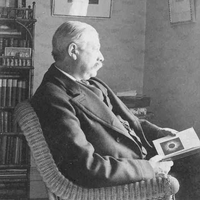
Info
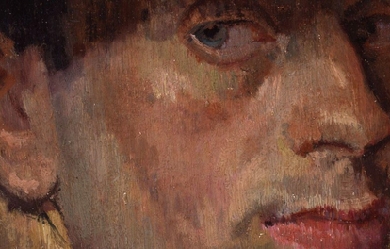
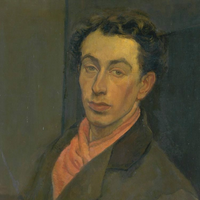
Isaac Rosenberg (25 November 1890– 1 April 1918) was an English poet and artist. His Poems from the Trenches are recognized as some of the most outstanding poetry written during the First World War. Early life Isaac Rosenberg was born in Bristol, the second of six children and the eldest son of his parents (his twin brother died at birth), Barnett (formerly Dovber) and Hacha Rosenberg, who were Lithuanian Jewish immigrants to Great Britain from Dvinsk (now in Latvia). In 1897, the family moved to Stepney, a poor district of the East End of London, and one with a strong Jewish community. Isaac Rosenberg attended St. Paul’s Primary School at Wellclose Square, St George in the East parish. Later, he went to the Baker Street Board School in Stepney, which had a strong Jewish presence. In 1902, he received a good conduct award and was allowed to take classes at the Arts and Crafts School in Stepney Green. In December 1904, he left the Baker Street School, and in January 1905, started an apprenticeship with Carl Hentschel, an engraver from Fleet Street. He became interested in both poetry and visual art, and started to attend evening classes at Birkbeck College. He withdrew from his apprenticeship in January 1911, as he had managed to find the finances to attend the Slade School of Fine Art at University College, London (UCL). During his time at Slade School, Rosenberg notably studied alongside David Bomberg, Mark Gertler, Stanley Spencer, Paul Nash, Edward Wadsworth, Dora Carrington, William Roberts, and Christopher Nevinson. He was taken up by Laurence Binyon and Edward Marsh, and began to write poetry seriously, but he suffered from ill-health. He published a pamphlet of ten poems, Night and Day, in 1912. He also exhibited paintings at the Whitechapel Gallery in 1914. Afraid that his chronic bronchitis would worsen, Rosenberg hoped to cure himself by relocating in 1914 to the warmer climate of South Africa, where his sister Mina lived in Cape Town. The Jewish Educational Aid Society of London helped by paying the fare. After arriving in Cape Town in the end of June 1914, he composed a poem On Receiving News of the War. While many wrote about war as patriotic sacrifice, Rosenberg was critical of it from the onset. However, feeling better and hoping to find employment as an artist in Britain, Rosenberg returned home in March 1915. He published a second collection of poems, Youth and then after being unable to find a permanent job enlisted in the British Army at the end of October 1915. He asked that half of his pay was sent to his mother. In a personal letter, Rosenberg described his attitude towards war, “I never joined the army for patriotic reasons. Nothing can justify war. I suppose we must all fight to get the trouble over.” First World War Rosenberg was assigned to the 12th Bantam Battalion of the Suffolk Regiment, a bantam being a designation for men under the usual minimum height of 5'3". After turning down an offer to apply for a commission to become a lance corporal, Rosenberg was transferred, first, to the South Lancashire Regiment, then, to the The King’s Own Royal Lancaster Regiment. In June 1916, he was sent with his unit to serve on the Western Front in France, where he arrived on the 3rd of June. He continued to write poetry while serving in the trenches, including Break of Day in the Trenches, Returning we Hear the Larks, and Dead Man’s Dump. In December 1916, the Poetry Magazine published his two poems. In January 1917, Rosenberg reported sick and his family and friends asked his superiors to remove him from the front lines; he was transferred to the Fortieth Division Works Battalion and started to deliver barbed wire to the trenches. He wrote his poem Dead Man’s Dump during this period. In June, he was temporarily assigned to the 229 Field Company, Royal Engineers. In September 1916, he spent ten days in London on leave. After returning to his old unit, he fell sick in October and spent two months in the 51st General Hospital. After release, he was transferred to the 1st Battalion of King’s Own Royal Regiment (KORL). He applied for a transfer to the one of all-Jewish battalions formed in Mesopotamia, but historians have been unable to track his application. On March 21, 1918, the German Army started its Spring offensive on the Western Front. A week later, Rosenberg sent his last letter with a poem Through these Pale Cold Days to England before going to the front lines with reinforcements. Having just finished night patrol, he was killed on the night of the April 1, 1918 with another 10 KORL’s soldiers; there is a dispute as to whether his death occurred at the hands of a sniper or in close combat. In either case, he died in a town called Fampoux, north-east of Arras. He was first buried in a mass grave, but in 1926, the unidentified remains of the six KORL’s soldiers were individually re-interred at Bailleul Road East Cemetery, Plot V, Saint-Laurent-Blangy, Pas de Calais, France. The Rosenberg’s gravestone is marked with his name and the words, “Buried near this spot”, as well as—"Artist and Poet". Legacy His self-portraits hang in the National Portrait Gallery and Tate Britain. A commemorative blue plaque to him hangs outside the Whitechapel Gallery, formerly the Whitechapel Library, which was unveiled by Anglo-Jewish writer Emanuel Litvinoff. On 11 November 1985, Rosenberg was among 16 Great War poets who were commemorated on a slate stone unveiled in Westminster Abbey’s Poet’s Corner. The inscription on the stone was written by a fellow Great War poet, Wilfred Owen. It reads: “My subject is War, and the pity of War. The Poetry is in the pity.” Rosenberg appears in the novel Grosse Fugue by Ian Phillips. In The Great War and Modern Memory, Paul Fussell’s landmark study of the literature of the First World War, Fussell identifies Rosenberg’s “Break of Day in the Trenches” as “the greatest poem of the war.” References Wikipedia—https://en.wikipedia.org/wiki/Isaac_Rosenberg
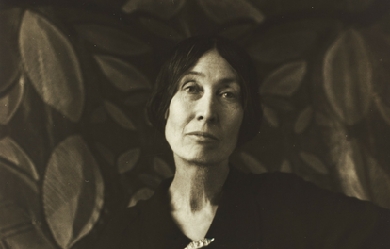
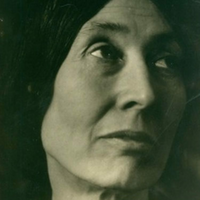
Lola Ridge, born Rose Emily Ridge (12 December 1873 Dublin—19 May 1941 Brooklyn) was an Irish-American anarchist poet and an influential editor of avant-garde, feminist, and Marxist publications. She is best remembered for her long poems and poetic sequences, published in numerous magazines and collected in five books of poetry. Along with other political poets of the early Modernist period, Ridge has received renewed critical attention since the beginning of the 21st century and is praised for making poetry directly from harsh urban life. A new selection of her poetry was published in 2007 and a biography in 2016.
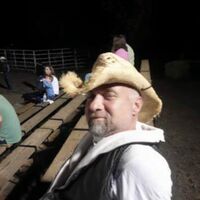
Wow..... Ummm...... Yeah...... that about covers it. I dunno what to write - says the writer. I write when I'm happy, I write when I'm sad. I have written, most likely, thousands of poems in my life. Some I like, some not soo much, but, they are all organic. There is truly only one poem I have written that I LOVED and I can't find it. It was most likely destroyed by my ex who made every attempt to hurt me when I finally walked away from a hateful, hostile, hurtful relationship. C'est La Vie - chapter closed and epitaph crafted.
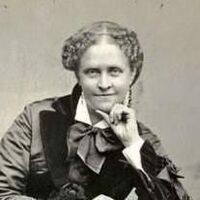
Helen Maria Hunt Jackson, born Helen Fiske (October 15, 1830 – August 12, 1885), was a United States writer who became an activist on behalf of improved treatment of Native Americans by the U.S. government. She detailed the adverse effects of government actions in her history A Century of Dishonor (1881). Her novel Ramona dramatized the federal government's mistreatment of Native Americans in Southern California and attracted considerable attention to her cause, although its popularity was based on its romantic and picturesque qualities rather than its political content. It was estimated to have been reprinted 300 times, and contributed to the growth of tourism in Southern California. Early years She was born Helen Fiske in Amherst, Massachusetts, the daughter of Nathan Welby Fiske and Deborah Waterman Vinal. She had two brothers, both of whom died after birth, and a sister Anne. Her father was a minister, author, and professor of Latin, Greek, and philosophy at Amherst College. Her mother died in 1844 when Helen was fourteen, and her father three years later. Her father provided for her education and arranged for an aunt to care for her. Fiske attended Ipswich Female Seminary and the Abbott Institute, a boarding school run by Reverend J.S.C. Abbott in New York City. She was a classmate of the poet Emily Dickinson, also from Amherst. The two corresponded for the rest of their lives, but few of their letters have survived. Marriage and family In 1852 at age 22, Fiske married U.S. Army Captain Edward Bissell Hunt. They had two sons, one of whom, Murray Hunt, died as an infant in 1854 of a brain disease. In 1863, her husband died in a military accident. Her second son, Rennie Hunt, died of diphtheria in 1865. About 1873-1874, Hunt met William Sharpless Jackson, a wealthy banker and railroad executive, while visiting at Colorado Springs, Colorado, at the resort of Seven Falls. They married in 1875 and she took the name Jackson, under which she was best known for her writings. She was a Unitarian. Career Helen Hunt began writing after the deaths of her family members. She published her early work anonymously, usually under the name "H.H." Ralph Waldo Emerson admired her poetry and used several of her poems in his public readings. He included five of them in his anthology Parnassus. She traveled widely. In the winter of 1873-1874 she was in Colorado Springs, Colorado, in search of a cure for tuberculosis. Here she met the man who would become her second husband. Over the next two years, she published three novels in the anonymous No Name Series, including Mercy Philbrick's Choice and Hetty's Strange History. In 1879 her interests turned to Native Americans after hearing a lecture in Boston by the Ponca Chief Standing Bear. He described the forcible removal of the Ponca from their Nebraska reservation and transfer to the Quapaw Reservation in Indian Territory, where they suffered from disease, climate and poor supplies. Upset about the mistreatment of Native Americans by government agents, Jackson became an activist. She started investigating and publicizing government misconduct, circulating petitions, raising money, and writing letters to the New York Times on behalf of the Ponca. A fiery and prolific writer, Jackson engaged in heated exchanges with federal officials over the injustices committed against American Indians. Among her special targets was U.S. Secretary of Interior Carl Schurz, whom she once called "the most adroit liar I ever knew." She exposed the government's violation of treaties with the American Indian tribes. She documented the corruption of US Indian agents, military officers, and settlers who encroached on and stole Indian lands. Jackson won the support of several newspaper editors who published her reports. Among her correspondents were editor William Hayes Ward of the New York Independent, Richard Watson Guilder of the Century Magazine, and publisher Whitelaw Reid of the New York Daily Tribune. Jackson also wrote a book, the first published under her own name, condemning state and federal Indian policy, and detailing the history of broken treaties. A Century of Dishonor (1881) called for significant reform in government policy toward Native Americans.[10] Jackson sent a copy to every member of Congress with a quote from Benjamin Franklin printed in red on the cover: "Look upon your hands: they are stained with the blood of your relations." The New York Times later wrote that she "soon made enemies at Washington by her often unmeasured attacks, and while on general lines she did some good, her case was weakened by her inability, in some cases, to substantiate the charges she had made; hence many who were at first sympathetic fell away." Jackson went to southern California for respite. Having been interested in the area's missions and the Mission Indians on an earlier visit, she began an in-depth study. While in Los Angeles, she met Don Antonio Coronel, former mayor of the city and a well-known authority on early Californio life in the area. He had served as inspector of missions for the Mexican government. Coronel told her about the plight of the Mission Indians after 1833. They were buffeted by the secularization policies of the Mexican government, as well as later U.S. policies, both of which led to their removal from mission lands. Under its original land grants, the Mexican government provided for resident Indians to continue to occupy such lands. After taking control of the territory in 1848, the U.S. generally disregarded such Mission Indian occupancy claims. In 1852, there were an estimated 15,000 Mission Indians in Southern California. By the time of Jackson's visit, they numbered fewer than 4,000. Coronel's account inspired Jackson to action. The U.S. Commissioner of Indian Affairs, Hiram Price, recommended her appointment as an Interior Department agent. Jackson's assignment was to visit the Mission Indians, ascertain the location and condition of various bands, and determine what lands, if any, should be purchased for their use. With the help of the US Indian agent Abbot Kinney, Jackson traveled throughout Southern California and documented conditions. At one point, she hired a law firm to protect the rights of a family of Saboba Indians facing dispossession from their land at the foot of the San Jacinto Mountains. In 1883, Jackson completed her 56-page report. It recommended extensive government relief for the Mission Indians, including the purchase of new lands for reservations and the establishment of more Indian schools. A bill embodying her recommendations passed the U.S. Senate but died in the House of Representatives. Jackson decided to write a novel to reach a wider audience. When she wrote Coronel asking for details about early California and any romantic incidents he could remember, she explained her purpose: "I am going to write a novel, in which will be set forth some Indian experiences in a way to move people's hearts. People will read a novel when they will not read serious books."[14] She was inspired by her friend Harriet Beecher Stowe's Uncle Tom's Cabin (1852). "If I could write a story that would do for the Indian one-hundredth part what Uncle Tom's Cabin did for the Negro, I would be thankful the rest of my life," she wrote. Although Jackson started an outline in California, she began writing the novel in December 1883 in her New York hotel room, and completed it in about three months. Originally titled In The Name of the Law, she published it as Ramona (1884). It featured Ramona, an orphan girl who was half Indian and half Scots, raised in Spanish Californio society, and her Indian husband Alessandro, and their struggles for land of their own. The characters were based on people known by Jackson and incidents which she had encountered. The book achieved rapid success among a wide public and was popular for generations; it was estimated to have been reprinted 300 times. Its romantic story also contributed to the growth of tourism to Southern California. Encouraged by the popularity of her book, Jackson planned to write a children's story about Indian issues, but did not live to complete it. Her last letter was written to President Grover Cleveland and said: "From my death bed I send you message of heartfelt thanks for what you have already done for the Indians. I ask you to read my Century of Dishonor. I am dying happier for the belief I have that it is your hand that is destined to strike the first steady blow toward lifting this burden of infamy from our country and righting the wrongs of the Indian race." Jackson died of stomach cancer in 1885 in San Francisco, California. Her husband arranged for her burial on a one-acre plot on a high plateau overlooking Colorado Springs, Colorado. Her grave was later moved to Evergreen Cemetery in Colorado Springs. At the time of her death, her estate was valued at $12,642. She used her married names, Helen Hunt and Helen Jackson, but she is most often referred to as Helen Hunt Jackson. The New York Times referred to her as Helen Hunt Jackson in 1885, reporting on her final illness, and in 1886, reporting on visitors to her grave. The name was used during her lifetime by others, though she disliked the practice. "It is not proper to keep one's first married name, after a second marriage", she wrote to Moncure Conway. To Caroline Healey Dall, she admitted she was "positively waging war" against being called "Helen Hunt Jackson". Critical response and legacy Jackson's A Century of Dishonor remains in print, as does a collection of her poetry. A New York Times reviewer said of Ramona that "by one estimate, the book has been reprinted 300 times." One year after Jackson's death the North American Review called Ramona "unquestionably the best novel yet produced by an American woman" and named it, along with Uncle Tom's Cabin, one of two most ethical novels of the 19th century. Sixty years after its publication, 600,000 copies had been sold. There have been over 300 reissues to date and the book has never been out of print. The novel has been adapted for other media, including three films, stage, and television productions. Valery Sherer Mathes assessed the writer and her work: Ramona may not have been another Uncle Tom's Cabin, but it served, along with Jackson's writings on the Mission Indians of California, as a catalyst for other reformers ....Helen Hunt Jackson cared deeply for the Indians of California. She cared enough to undermine her health while devoting the last few years of her life to bettering their lives. Her enduring writings, therefore, provided a legacy to other reformers, who cherished her work enough to carry on her struggle and at least try to improve the lives of America's first inhabitants. Her friend Emily Dickinson once described her limitations: "she has the facts but not the phosphorescence." In a review of a film version, a journalist wrote about the novel, calling it "the long and lugubrious romance by Helen Hunt Jackson, over which America wept unnumbered gallons in the eighties and nineties," and complained of "the long, uneventful stretches of the novel."[26] In reviewing the history of her publisher, Houghton Mifflin, a 1970 reviewer noted that Jackson typified the house's success: "Middle aged, middle class, middlebrow." Jackson herself wrote, "My Century of Dishonor and Ramona are the only things I have done of which I am glad.... They will live, and... bear fruit." A portion of Jackson's Colorado home has been reconstructed in the Colorado Springs Pioneers Museum and furnished with her possessions.

Alexandre is a musician, poet, and philosopher with a deep interest in the mystical, magickal, and occult. While he has been playing music ever since he was 3 years old, his interest in mysticism and poetry came about from the study of philosophy. Beginning in college with the standard western philosophers such as Plato, Kant, Descartes, and Nietzsche, he realized that there was still much more in the realm of wisdom to be explored. Reading about Zen, Taoism, and Cabala instilled an appreciation of simple, poetic verse as a way of communicating wisdom, and led him to the study of the magickal system of Aleister Crowley, known as Thelema, from where he draws much of his inspiration.

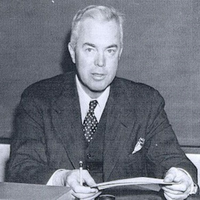
Robert Silliman Hillyer (June 3, 1895– December 24, 1961) was an American poet. Life Hillyer was born in East Orange, New Jersey. He attended Kent School in Kent, Connecticut, and graduated from Harvard in 1917, after which he went to France and volunteered with the S.S.U. 60 of the Norton-Harjes Ambulance Corps serving the Allied Forces in World War I. He had long links to Harvard University, including holding a position as a Professor of English. From 1948 to 1951 Hillyer was a visiting professor at Kenyon College and from there went to serve on the faculty at the University of Delaware. While teaching at Trinity College in Hartford, Connecticut in the late 1920s, Hillyer was made a member of the Epsilon chapter of the prestigious St. Anthony Hall Delta Psi literary fraternity in 1927. His work is in meter and often rhyme. He is known for his sonnets and for such poems as “Theme and Variations” (on his war experiences) and the light “Letter to Robert Frost”. American composer Ned Rorem’s most famous art song is a setting of Hillyer’s “Early in the Morning”. Hillyer is remembered as a kind of villain by Ezra Pound scholars, who associate him with his 1949 attacks on The Pisan Cantos in the Saturday Review of Literature which sparked the Bollingen Controversy. Hillyer was identified with the Harvard Aesthetes grouping. He was 66 when he died in Wilmington, Delaware. Awards * Pulitzer Prize for Poetry for “Collected Verse” in 1934. Works Poetry * The Collected Poems. Knopf. 1961. * The relic & other poems. Knopf. 1957. * The suburb by the sea: new poems. Knopf. 1952. * The death of Captain Nemo: a narrative poem. A.A. Knopf. 1949. * Poems for music, 1917–1947. A. A. Knopf. 1947. * The Collected Verse of Robert Hillyer. A.A. Knopf. 1933. * The Coming Forth by Day: An Anthology of Poems from the Egyptian Book of the Dead. B.J. Brimmer Company. 1923. * Hillyer, Robert (1920). Alchemy: A Symphonic Poem. Illustrator Beatrice Stevens. Kessinger Publishing, LLC. * Hillyer, Robert (1920). The Five Books of Youth. Brentano’s. * Hillyer, Robert (1917). Sonnets and Other Lyrics. Harvard University Press. * Hillyer, Robert (1917). The Wise Old Apple Tree in the Spring. Harvard University Press. Novels * Riverhead (1932) Criticism * In Pursuit of Poetry. McGraw-Hill. 1960. * First Principles of Verse. The Writer. 1950. Translations * Oluf Friis (1922). A Book of Danish Verse: Translated in the Original Meters. Translators Samuel Foster Damon, Robert Hillyer. The American-Scandinavian Foundation. Editors * Kahlil Gibran (1959). Hayim Musa Nahmad, Robert Hillyer, ed. A Tear and a Smile. A. A. Knopf. * Samuel Foster Damon, Robert Hillyer, ed. (1923). Eight More Harvard Poets. Brentano’s. References Wikipedia—https://en.wikipedia.org/wiki/Robert_Hillyer
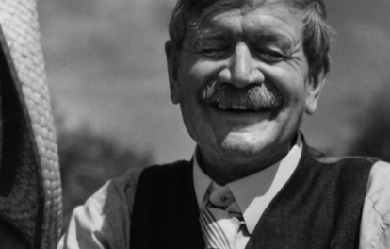
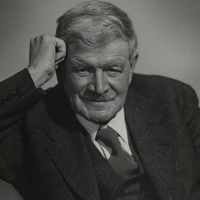
Stephen P. H. Butler Leacock, (30 December 1869 – 28 March 1944) was a Canadian teacher, political scientist, writer, and humorist. Between the years 1915 and 1925, he was the best-known English-speaking humorist in the world. He is known for his light humour along with criticisms of people’s follies. The Stephen Leacock Memorial Medal for Humour was named in his honour. Early life Stephen Leacock was born in Swanmore, a village near Southampton in southern England. He was the third of the eleven children born to (Walter) Peter Leacock (b.1834), who was born and grew up at Oak Hill on the Isle of Wight, an estate that his grandfather had purchased after returning from Madeira where his family had made a fortune out of plantations and Leacock’s Madeira wine, founded in 1760. Stephen’s mother, Agnes, was born at Soberton, the youngest daughter by his second wife (Caroline Linton Palmer) of the Rev. Stephen Butler, of Bury Lodge, the Butler estate that overlooked the village of Hambledon, Hampshire. Stephen Butler (for whom Leacock was named), was the maternal grandson of Admiral James Richard Dacres and a brother of Sir Thomas Dacres Butler, Usher of the Black Rod. Leacock’s mother was the half-sister of Major Thomas Adair Butler, who won the Victoria Cross at the siege and capture of Lucknow. Peter’s father, Thomas Murdock Leacock J.P., had already conceived plans eventually to send his son out to the colonies, but when he discovered that at age eighteen Peter had married Agnes Butler without his permission, almost immediately he shipped them out to South Africa where he had bought them a farm. The farm in South Africa failed and Stephen’s parents returned to Hampshire, where he was born. When Stephen was six, he came out with his family to Canada, where they settled on a farm near the village of Sutton, Ontario, and the shores of Lake Simcoe. Their farm in the township of Georgina in York County was also unsuccessful, and the family was kept afloat by money sent from Leacock’s paternal grandfather. His father became an alcoholic; in the fall of 1878, he travelled west to Manitoba with his brother E.P. Leacock (the subject of Stephen’s book My Remarkable Uncle, published in 1942), leaving behind Agnes and the children. Stephen Leacock, always of obvious intelligence, was sent by his grandfather to the elite private school of Upper Canada College in Toronto, also attended by his older brothers, where he was top of the class and was chosen as head boy. Leacock graduated in 1887, and returned home to find that his father had returned from Manitoba. Soon after, his father left the family again and never returned. There is some disagreement about what happened to Peter Leacock; some suggest that he went to live in Argentina, while other sources indicate that he moved to Nova Scotia and changed his name to Lewis. In 1887, seventeen-year-old Leacock started at University College at the University of Toronto, where he was admitted to the Zeta Psi fraternity. His first year was bankrolled by a small scholarship, but Leacock found he could not return to his studies the following year because of financial difficulties. He left university to work as a teacher—an occupation he disliked immensely—at Strathroy, Uxbridge and finally in Toronto. As a teacher at Upper Canada College, his alma mater, he was able simultaneously to attend classes at the University of Toronto and, in 1891, earn his degree through part-time studies. It was during this period that his first writing was published in The Varsity, a campus newspaper. Academic and political life Disillusioned with teaching, in 1899 he began graduate studies at the University of Chicago under Thorstein Veblen, where he received a doctorate in political science and political economy. He moved from Chicago, Illinois to Montreal, Quebec, where he eventually became the William Dow Professor of Political Economy and long-time chair of the Department of Economics and Political Science at McGill University. He was closely associated with Sir Arthur Currie, former commander of the Canadian Corps in the Great War and principal of McGill from 1919 until his death in 1933. In fact, Currie had been a student observing Leacock’s practice teaching in Strathroy in 1888. In 1936, Leacock was forcibly retired by the McGill Board of Governors—an unlikely prospect had Currie lived. Leacock was both a social conservative and a partisan Conservative. He opposed giving women the right to vote, and had a mixed record on non-Anglo-Saxon immigration, having written both in support of expanding immigration beyond Anglo-Saxons prior to World War II and in opposition to expanding Canadian immigration beyond Anglo Saxons near the close of World War II. He was a staunch champion of the British Empire and the Imperial Federation Movement and went on lecture tours to further the cause. Despite his conservatism, he was a staunch advocate for social welfare legislation and wealth redistribution. Although Prime Minister R.B. Bennett asked him to be a candidate for the 1935 Dominion election, Leacock declined the invitation. Nevertheless, he would stump for local Conservative candidates at his summer home. Literary life Early in his career, Leacock turned to fiction, humour, and short reports to supplement (and ultimately exceed) his regular income. His stories, first published in magazines in Canada and the United States and later in novel form, became extremely popular around the world. It was said in 1911 that more people had heard of Stephen Leacock than had heard of Canada. Also, between the years 1915 and 1925, Leacock was the most popular humorist in the English-speaking world. A humorist particularly admired by Leacock was Robert Benchley from New York. Leacock opened correspondence with Benchley, encouraging him in his work and importuning him to compile his work into a book. Benchley did so in 1922, and acknowledged the nagging from north of the border. Near the end of his life, the American comedian Jack Benny recounted how he had been introduced to Leacock’s writing by Groucho Marx when they were both young vaudeville comedians. Benny acknowledged Leacock’s influence and, fifty years after first reading him, still considered Leacock one of his favorite comic writers. He was puzzled as to why Leacock’s work was no longer well known in the United States. During the summer months, Leacock lived at Old Brewery Bay, his summer estate in Orillia, across Lake Simcoe from where he was raised and also bordering Lake Couchiching. A working farm, Old Brewery Bay is now a museum and National Historic Site of Canada. Gossip provided by the local barber, Jefferson Short, provided Leacock with the material which would become Sunshine Sketches of a Little Town (1912), set in the thinly-disguised Mariposa. Although he wrote learned articles and books related to his field of study, his political theory is now all but forgotten. Leacock was awarded the Royal Society of Canada’s Lorne Pierce Medal in 1937, nominally for his academic work. “The proper punishment for the Hohenzollerns, and the Hapsburgs, and the Mecklenburgs, and the Muckendorfs, and all such puppets and princelings, is that they should be made to work; and not made to work in the glittering and glorious sense, as generals and chiefs of staff, and legislators, and land-barons, but in the plain and humble part of labourers looking for a job. (Leacock 1919: 9)” Memorial Medal for Humour The Stephen Leacock Associates is a foundation chartered to preserve the literary legacy of Stephen Leacock, and oversee the annual award of the Stephen Leacock Memorial Medal for Humour. It is a prestigious honour, given to encourage Canadian humour writing and awarded for the best in Canadian humour writing. The foundation was instituted in 1946 and awarded the first Leacock Medal in 1947. The presentation occurs in June each year at the Stephen Leacock Award Dinner, at the Geneva Park Conference Centre in Orillia, Ontario. Personal life Leacock was born in England in 1869. His father, Peter Leacock, and his mother, Agnes Emma Butler Leacock, were both from well-to-do families. The family, eventually consisting of eleven children, immigrated to Canada in 1876, settling on a one hundred-acre farm in Sutton, Ontario. There Stephen was home-schooled until he was enrolled in Upper Canada College, Toronto. He became the head boy in 1887, and then entered the University of Toronto to study languages and literature. Despite completing two years of study in one year, he was forced to leave the university because his father had abandoned the family. Instead, Leacock enrolled in a three-month course at Strathroy Collegiate Institute to become a qualified high school teacher. His first appointment was at Uxbridge High School, Ontario, but he was soon offered a post at Upper Canada College, where he remained from 1889 through 1899. At this time, he also resumed part-time studies at the University of Toronto, graduating with a B.A. in 1891. However, Leacock’s real interests were turning towards economics and political theory, and in 1899 he was accepted for postgraduate studies at the University of Chicago, where he earned his PhD in 1903 In 1900 Leacock married Beatrix Hamilton, niece of Sir Henry Pellatt, who had built Casa Loma, the largest castle in North America. In 1915, after 15 years of marriage, the couple had their only child, Stephen Lushington Leacock. While Leacock doted on the boy, it soon became apparent that “Stevie” suffered from a lack of growth hormone. Growing to be only four feet tall, he had a love-hate relationship with Leacock, who tended to treat him like a child. Beatrix died in 1925 due to breast cancer. Leacock was offered a post at McGill University, where he remained until he retired in 1936. In 1906, he wrote Elements of Political Science, which remained a standard college textbook for the next twenty years and became his most profitable book. He also began public speaking and lecturing, and he took a year’s leave of absence in 1907 to speak throughout Canada on the subject of national unity. He typically spoke on national unity or the British Empire for the rest of his life. Leacock began submitting articles to the Toronto humor magazine Grip in 1894, and soon was publishing many humorous articles in Canadian and American magazines. In 1910, he privately published the best of these as Literary Lapses. The book was spotted by a British publisher, John Lane, who brought out editions in London and New York, assuring Leacock’s future as a writer. This was confirmed by Literary Lapses (1910), Nonsense Novels (1911) – probably his best books of humorous sketches—and by the more sentimental favorite, Sunshine Sketches of a Little Town (1912). John Lane introduced the young cartoonist Annie Fish to illustrate his 1913 book Behind the Beyond. Leacock’s humorous style was reminiscent of Mark Twain and Charles Dickens at their sunniest—for example in his even and satisfying My Discovery of England (1922). However, his Arcadian Adventures with the Idle Rich (1914) is a darker collection that satirizes city life. Collections of sketches continued to follow almost annually at times, with a mixture of whimsy, parody, nonsense, and satire that was never bitter. Leacock was enormously popular not only in Canada but in the United States and Britain. In later life, Leacock wrote on the art of humor writing and also published biographies of Twain and Dickens. After retirement, a lecture tour to western Canada led to his book My Discovery of the West: A Discussion of East and West in Canada (1937), for which he won the Governor General’s Award. He also won the Mark Twain medal and received a number of honorary doctorates. Other nonfiction books on Canadian topics followed and he began work on an autobiography. Leacock died of throat cancer in Toronto in 1944. A prize for the best humour writing in Canada was named after him, and his house at Orillia on the banks of Lake Couchiching became the Stephen Leacock Museum. Death and tributes Predeceased by Trix (who had died of breast cancer in 1925), Leacock was survived by son Stevie (Stephen Lushington Leacock (1915–1974). In accordance with his wishes, after his death from throat cancer, Leacock was buried in the St George the Martyr Churchyard (St. George’s Church, Sibbald Point), Sutton, Ontario Shortly after his death, Barbara Nimmo, his niece, literary executor and benefactor, published two major posthumous works: Last Leaves (1945) and The Boy I Left Behind Me (1946). His physical legacy was less treasured, and his abandoned summer cottage became derelict. It was rescued from oblivion when it was declared a National Historic Site of Canada in 1958 and ever since has operated as a museum called the Stephen Leacock Museum National Historic Site. In 1947, the Stephen Leacock Award was created to meet the best in Canadian literary humour. In 1969, the centennial of his birth, Canada Post issued a six-cent stamp with his image on it. The following year, the Stephen Leacock Centennial Committee had a plaque erected at his English birthplace and a mountain in the Yukon was named after him. A number of buildings in Canada are named after Leacock, including the Stephen Leacock Building at McGill University, Stephen Leacock Public School in Ottawa, a theatre in Keswick, Ontario, and a school Stephen Leacock Collegiate Institute in Toronto. Screen adaptations Two Leacock short stories have been adapted as National Film Board of Canada animated shorts by Gerald Potterton: My Financial Career and The Awful Fate of Melpomenus Jones. Sunshine Sketches, based on Sunshine Sketches of a Little Town, aired on CBC Television in 1952–1953; it was the first Canadian broadcast of an English-language dramatic series, as it debuted on the first night that television was broadcast in Toronto. In 2012, a screen adaptation based on Sunshine Sketches of a Little Town was aired on CBC Television to celebrate both the 75th anniversary of the CBC and the 100th anniversary of Leacock’s original collection of short stories. The recent screen adaptation featured Gordon Pinsent as a mature Leacock. Bibliography Fiction * Literary Lapses (1910) * Nonsense Novels (1911) * Sunshine Sketches of a Little Town (1912) * Behind the Beyond (1913)– illustrated by Annie Fish. * Arcadian Adventures with the Idle Rich (1914) * Moonbeams from the Larger Lunacy (1915) * Further Foolishness (1916) * Essays and Literary Studies (1916) * Frenzied Fiction (1918) * The Hohenzollerns in America (1919) * Winsome Winnie (1920) * My Discovery of England (1922) * College Days (1923) * Over the Footlights (1923) * The Garden of Folly (1924) * Winnowed Wisdom (1926) * Short Circuits (1928) * The Iron Man and the Tin Woman (1929) * Laugh With Leacock (1930) * The Dry Pickwick (1932) * Afternoons in Utopia (1932) * Hellements of Hickonomics in Hiccoughs of Verse Done in Our Social Planning Mill (1936) * Model Memoirs (1938) * Too Much College (1939) * My Remarkable Uncle (1942) * Happy Stories (1943) * How to Write (1943) * Last Leaves (1945) * My Lost Dollar Non-fiction * Elements of Political Science (1906) * Baldwin, Lafontaine, Hincks: Responsible Government (1907) * Practical Political Economy (1910) * Adventurers of the Far North (1914) * The Dawn of Canadian History (1914) * The Mariner of St. Malo: a chronicle of the voyages of Jacques Cartier (1914) * The Unsolved Riddle of Social Justice (1920) * Mackenzie, Baldwin, Lafontaine, Hincks (1926) * Economic Prosperity in the British Empire (1930) * The Economic Prosperity of the British Empire (1931) * Humour: Its Theory and Technique, with Examples and Samples (1935) * The Greatest Pages of American Humor (1936) * Humour and Humanity (1937) * Here Are My Lectures (1937) * My Discovery of the West (1937) * Our British Empire (1940) * Canada: The Foundations of Its Future (1941) * Our Heritage of Liberty (1942) * Montreal: Seaport and City (1942) * Canada and the Sea (1944) * While There Is Time (1945) * My Lost Dollar Biography * Mark Twain (1932) * Charles Dickens: His Life and Work (1933) Autobiography * The Boy I Left Behind Me (1946) Quotations * "Lord Ronald … flung himself upon his horse and rode madly off in all directions."—Nonsense Novels, “Gertrude the Governess”, 1911 * “Professor Leacock has made more people laugh with the written word than any other living author. One may say he is one of the greatest jesters, the greatest humorist of the age.”—A. P. Herbert * “Mr Leacock is as 'bracing’ as the seaside place of John Hassall’s famous poster. His wisdom is always humorous, and his humour is always wise.”—Sunday Times * “He is still inimitable. No one, anywhere in the world, can reduce a thing to ridicule with such few short strokes. He is the Grock of literature.”—Evening Standard * “I detest life-insurance agents: they always argue that I shall some day die, which is not so.” * “Hockey captures the essence of Canadian experience in the New World. In a land so inescapably and inhospitably cold, hockey is the chance of life, and an affirmation that despite the deathly chill of winter we are alive.” References Wikipedia—https://en.wikipedia.org/wiki/Stephen_Leacock
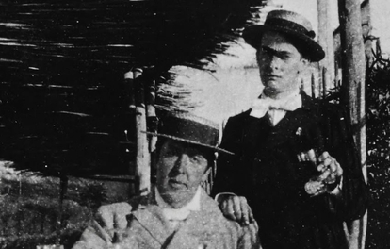
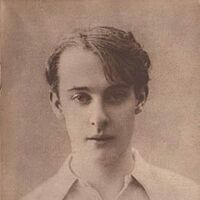
Lord Alfred Bruce Douglas (22 October 1870 – 20 March 1945), nicknamed Bosie, was a British author, poet and translator, better known as the intimate friend and lover of the writer Oscar Wilde. Much of his early poetry was Uranian in theme, though he tended, later in life, to distance himself from both Wilde's influence and his own role as a Uranian poet. Early life and background The third son of John Douglas, 9th Marquess of Queensberry and his first wife, Sibyl née Montgomery, Douglas was born at Ham Hill House in Worcestershire. He was his mother's favourite child; she called him Bosie (a derivative of Boysie), a nickname which stuck for the rest of his life. Douglas was educated at Winchester College (1884–88) and at Magdalen College, Oxford (1889–93), which he left without obtaining a degree. At Oxford, Douglas edited an undergraduate journal The Spirit Lamp (1892-3), an activity that intensified the constant conflict between him and his father. Their relationship had always been a strained one and during the Queensberry-Wilde feud, Douglas sided with Wilde, even encouraging him to prosecute his own father for libel. In 1893, Douglas had a brief affair with George Ives. In 1860, Douglas's grandfather, the 8th Marquess of Queensberry, had died in what was reported as a shooting accident, but his death was widely believed to have been suicide. In 1862, his widowed grandmother, Lady Queensberry, converted to Roman Catholicism and took her children to live in Paris. Apart from the violent death of his grandfather, there were other tragedies in Douglas's family. One of his uncles, Lord James Douglas, was deeply attached to his twin sister 'Florrie' and was heartbroken when she married. In 1885, he tried to abduct a young girl, and after that became ever more manic. In 1888, Lord James married, but this proved disastrous. Separated from Florrie, James drank himself into a deep depression, and in 1891 committed suicide by cutting his throat. Another of his uncles, Lord Francis Douglas (1847–1865) had died in a climbing accident on the Matterhorn, while his uncle Lord Archibald Edward Douglas (1850–1938) became a clergyman. (Alfred Douglas's only child was in turn to go mad, and died in a mental hospital.) Alfred Douglas's aunt, Lord James's twin Lady Florence Douglas (1855–1905), was an author, war correspondent for the Morning Post during the First Boer War, and a feminist. In 1890, she published a novel, Gloriana, or the Revolution of 1900, in which women's suffrage is achieved after a woman posing as a man named Hector l'Estrange is elected to the House of Commons. The character l'Estrange is clearly based on Oscar Wilde. Relationship with Wilde In 1891, Douglas met Oscar Wilde; although the playwright was married with two sons, they soon began an affair. In 1894, the Robert Hichens novel The Green Carnation was published. Said to be a roman a clef based on the relationship of Wilde and Douglas, it would be one of the texts used against Wilde during his trials in 1895. Douglas, known to his friends as 'Bosie', has been described as spoiled, reckless, insolent and extravagant. He would spend money on boys and gambling and expected Wilde to contribute to his tastes. They often argued and broke up, but would also always reconcile. Douglas had praised Wilde's play Salome in the Oxford magazine, The Spirit Lamp, of which he was editor (and used as a covert means of gaining acceptance for homosexuality). Wilde had originally written Salomé in French, and in 1893 he commissioned Douglas to translate it into English. Douglas's French was very poor and his translation was highly criticised: a passage that goes "On ne doit regarder que dans les miroirs" (French for "One should only look in mirrors") was translated as "One must not look at mirrors". Douglas's temper would not accept Wilde's criticism and he claimed that the errors were really in Wilde's original play. This led to a hiatus in the relationship and a row between the two men, with angry messages being exchanged and even the involvement of the publisher John Lane and the illustrator Aubrey Beardsley when they themselves objected to Douglas's work. Beardsley complained to Robbie Ross: "For one week the numbers of telegraph and messenger boys who came to the door was simply scandalous". Wilde redid much of the translation himself, but, in a gesture of reconciliation, suggested that Douglas be dedicated as the translator rather than them sharing their names on the title-page. Accepting this, Douglas, in his vanity, compared a dedication to sharing the title-page as "the difference between a tribute of admiration from an artist and a receipt from a tradesman." On another occasion, while staying together in Brighton, Douglas fell ill with influenza and was nursed back to health by Wilde, but failed to return the favour when Wilde fell ill as well. Instead Douglas moved to the Grand Hotel and, on Wilde's 40th birthday, sent him a letter saying that he had charged him the bill. Douglas also gave his old clothes to male prostitutes, but failed to remove incriminating letters exchanged between him and Wilde, which were then used for blackmail. Alfred's father, the Marquess of Queensberry, quickly suspected the liaison to be more than a friendship. He sent his son a letter, attacking him for leaving Oxford without a degree and failing to take up a proper career, such as a civil servant or lawyer. He threatened to "disown [Alfred] and stop all money supplies". Alfred responded with a telegram stating: "What a funny little man you are". Queensberry was infuriated by this attitude. In his next letter he threatened his son with a "thrashing" and accused him of being "crazy". He also threatened to "make a public scandal in a way you little dream of" if he continued his relationship with Wilde. Queensberry was well known for his temper and threatening to beat people with a horsewhip. Alfred sent his father a postcard stating "I detest you" and making it clear that he would take Wilde's side in a fight between him and the Marquess, "with a loaded revolver". In answer Queensberry wrote to Alfred (whom he addressed as "You miserable creature") that he had divorced Alfred's mother in order not to "run the risk of bringing more creatures into the world like yourself" and that, when Alfred was a baby, "I cried over you the bitterest tears a man ever shed, that I had brought such a creature into the world, and unwittingly committed such a crime... You must be demented". When Douglas' eldest brother, Lord Drumlanrig, heir to the marquessate of Queensberry, died in a suspicious hunting accident in October 1894, rumours circulated that Drumlanrig had been having a homosexual relationship with the Prime Minister, Lord Rosebery. The elder Queensberry thus embarked on a campaign to save his other son, and began a public persecution of Wilde. He and a minder confronted the playwright in his own home; later, Queensberry planned to throw rotten vegetables at Wilde during the premiere of The Importance of Being Earnest, but, forewarned of this, the playwright was able to deny him access to the theatre. Queensberry then publicly insulted Wilde by leaving, at the latter's club, a visiting card on which he had written: "For Oscar Wilde posing as a somdomite"–a misspelling of "sodomite." The wording is in dispute – the handwriting is unclear – although Hyde reports it as this. According to Merlin Holland, Wilde's grandson, it is more likely "Posing somdomite," while Queensberry himself claimed it to be "Posing as somdomite." Holland suggests that this wording ("posing [as] ...") would have been easier to defend in court. The 1895 trials In response to this card, and with Douglas's avid support, but against the advice of friends such as Robert Ross, Frank Harris, and George Bernard Shaw, Wilde had Queensberry arrested and charged with criminal libel in a private prosecution, as sodomy was then a crime. Several highly suggestive erotic letters that Wilde had written to Douglas were introduced into evidence; he claimed that they were works of art. Wilde was closely questioned about the homoerotic themes in The Picture of Dorian Gray and in The Chameleon, a single-issue magazine published by Douglas to which he had contributed a short article. Queensberry's lawyer portrayed Wilde as a vicious older man who habitually preyed upon naive young boys and seduced them into a life of homosexuality with extravagant gifts and promises of a glamorous lifestyle. Queensberry's attorney announced in court that he had located several male prostitutes who were to testify that they had had sex with Wilde. Wilde then dropped the libel charge, on his lawyers' advice, as a conviction was very unlikely if the libel were demonstrated in court to be true. Based on the evidence raised during the case, Wilde was arrested the next day and charged with committing sodomy and "gross indecency", a vague charge which covered all homosexual acts other than sodomy. Douglas's 1892 poem Two Loves, which was used against Wilde at the latter's trial, ends with the famous line that refers to homosexuality as the love that dare not speak its name. Wilde gave an eloquent but counterproductive explanation of the nature of this love on the witness stand. The trial resulted in a hung jury. In 1895, when during his trials Wilde was released on bail, Douglas's cousin Sholto Johnstone Douglas stood surety for £500 of the bail money. The prosecutor opted to retry the case. Wilde was convicted on 25 May 1895 and sentenced to two years' hard labour, first at Pentonville, then Wandsworth, then famously in Reading Gaol. Douglas was forced into exile in Europe. While in prison, Wilde wrote Douglas a very long and critical letter entitled De Profundis, describing exactly what he felt about him, which Wilde was not permitted to send, but which may or may not have been sent to Douglas after Wilde's release. Following Wilde's release (19 May 1897), the two reunited in August at Rouen, but stayed together only a few months owing to personal differences and the various pressures on them. Naples and Paris This meeting was disapproved of by the friends and families of both men. During the later part of 1897, Wilde and Douglas lived together near Naples, but for financial and other reasons, they separated. Wilde lived the remainder of his life primarily in Paris, and Douglas returned to England in late 1898. The period when the two men lived in Naples would later become quite controversial. Wilde claimed that Douglas had offered a home, but had no funds or ideas. When Douglas eventually did gain funds from his late father's estate, he refused to grant Wilde a permanent allowance, although he did give him occasional handouts. When Wilde died in 1900, he was relatively impoverished. Douglas served as chief mourner, although there reportedly was an altercation at the gravesite between him and Robert Ross. This struggle would preview the later litigations between the two former lovers of Oscar Wilde. Marriage After Wilde's death, Douglas established a close friendship with Olive Eleanor Custance, an heiress and poet. They married on 4 March 1902 and had one son, Raymond Wilfred Sholto Douglas (17 November 1902 - 10 October 1964) who was diagnosed with a schizo-affective disorder at the age of 24, and died unmarried, in a mental hospital. Repudiation of Wilde More than a decade after Wilde's death, with the release of suppressed portions of Wilde's De Profundis letter in 1912, Douglas turned against his former friend, whose homosexuality he grew to condemn. He was a defence witness in the libel case brought by Maud Allan against Noel Pemberton Billing in 1918. Billing had accused Allan, who was performing Wilde's play Salome, of being part of a homosexual conspiracy to undermine the war effort. Douglas also contributed to Billing's journal Vigilante as part of his campaign against Robert Ross. He had written a poem referring to Margot Asquith "bound with Lesbian fillets" while her husband Herbert, the Prime Minister, gave money to Ross. During the trial he described Wilde as "the greatest force for evil that has appeared in Europe during the last three hundred and fifty years". Douglas added that he intensely regretted having met Wilde, and having helped him with the translation of Salome which he described as "a most pernicious and abominable piece of work”. Libel actions Douglas started his "litigious and libellous career" by obtaining an apology and fifty guineas each from the Oxford and Cambridge university magazines The Isis and Cambridge for defamatory references to him in an article on Wilde. He was a plaintiff and defendant in several trials for civil or criminal libel. In 1913 he accused Arthur Ransome of libelling him in his book Oscar Wilde: A Critical Study. He saw this trial as a weapon against his enemy Ross, not understanding that Ross would not be called to give evidence. In a similar way he had not appreciated the fact that his father's character would not be an issue when he urged Wilde to sue back in 1895. The court found in Ransome's favour. Ransome did remove the offending passages from the 2nd edition of his book. In the most noted case, brought by Winston Churchill in 1923, Douglas was found guilty of libelling Churchill and was sentenced to six months in prison. Douglas had claimed that Churchill had been part of a Jewish conspiracy to kill Lord Kitchener, the British Secretary of State for War. Kitchener had died on 5 June 1916, while on a diplomatic mission to Russia: the ship in which he was travelling, the armoured cruiser HMS Hampshire, struck a German naval mine and sank west of the Orkney Islands. In spite of this libel claim, Douglas wrote a sonnet in praise of Churchill in 1941. In 1924, while in prison, Douglas, in an ironic echo of Wilde's composition of De Profundis (Latin for "From the Depths") during his incarceration, wrote his last major poetic work, In Excelsis (literally, "In the highest"), which contains 17 cantos. Since the prison authorities would not allow Douglas to take the manuscript with him when he was released, he had to rewrite the entire work from memory. Douglas maintained that his health never recovered from his harsh prison ordeal, which included sleeping on a plank bed without a mattress. Later life In 1911, Douglas embraced Roman Catholicism, as Oscar Wilde had also done earlier. Following his own incarceration in prison in 1924, Douglas's feelings toward Oscar Wilde began to soften considerably. He said in Oscar Wilde: A Summing Up that “Sometimes a sin is also a crime (for example, a murder or theft) but this is not the case with homosexuality, any more than with adultery”. Throughout the 1930s and until his death, Douglas maintained correspondences with many people, including Marie Stopes and George Bernard Shaw. Anthony Wynn wrote the play Bernard and Bosie: A Most Unlikely Friendship based on the letters between Shaw and Douglas. One of Douglas's final public appearances was his well-received lecture to the Royal Society of Literature on 2 September 1943, entitled The Principles of Poetry, which was published in an edition of 1, copies. He attacked the poetry of T. S. Eliot, and the talk was praised by Arthur Quiller-Couch and Augustus John. Douglas's only child, Raymond, was diagnosed with schizoaffective disorder in 1927 and entered St Andrew's Hospital, a mental institution. He was decertified and released after five years, but suffered a subsequent breakdown and returned to the hospital. When his mother, Olive Douglas, died of a cerebral hemorrhage at the age of 67, Raymond was able to attend her funeral and in June he was again decertified and released. However, his conduct rapidly deteriorated and he returned to St Andrew's in November where he stayed until his death on 10 October 1964. Death Douglas died of congestive heart failure at Lancing in West Sussex on 20 March 1945 at the age of 74. He was buried on 23 March at the Franciscan Monastery, Crawley, West Sussex, where he is interred alongside his mother, Sibyl, Marchioness of Queensberry, who died on 31 October 1935 at the age of 91. A single gravestone covers them both. The elderly Douglas, living in reduced circumstances in Hove in the 1940s, is mentioned in the Diaries of Chips Channon and the first autobiography of Sir Donald Sinden, both of whom attended his funeral. Writings Douglas published several volumes of poetry; two books about his relationship with Wilde, Oscar Wilde and Myself (1914; largely ghostwritten by T.W.H. Crosland, the assistant editor of The Academy and later repudiated by Douglas), Oscar Wilde: A Summing Up (1940); and a memoir, The Autobiography of Lord Alfred Douglas (1931). Douglas also was the editor of a literary journal, The Academy, from 1907 to 1910, and during this time he had an affair with artist Romaine Brooks, who was also bisexual (the main love of her life, Natalie Clifford Barney, also had an affair with Wilde's niece Dorothy). There are six biographies of Douglas. The earlier ones by Braybrooke and Freeman were not allowed to quote from Douglas’s copyright work, and De Profundis was unpublished. Later biographies were by Rupert Croft-Cooke, H. Montgomery Hyde (who also wrote about Oscar Wilde), Douglas Murray (who describes Braybrooke’s biography as "a rehash and exaggeration of Douglas’s book", i.e. his autobiography). The most recent is Alfred Douglas: A Poet's Life and His Finest Work by Caspar Wintermans, from Peter Owen Publishers in 2007. Poetry * Poems (1896) * Tails with a Twist 'by a Belgian Hare' (1898) * The City of the Soul (1899) * The Duke of Berwick (1899) * The Placid Pug (1906) * The Pongo Papers and the Duke of Berwick (1907) * Sonnets (1909) * The Collected Poems of Lord Alfred Douglas (1919) * In Excelsis (1924) * The Complete Poems of Lord Alfred Douglas (1928) * Sonnets (1935) * Lyrics (1935) * The Sonnets of Lord Alfred Douglas (1943) Non-fiction * Oscar Wilde and Myself (1914) (ghost-written by T. W. H. Crosland [17]) * Foreword to New Preface to the 'Life and Confessions of Oscar Wilde' by Frank Harris (1925) * Introduction to Songs of Cell by Horatio Bottomley (1928) * The Autobiography of Lord Alfred Douglas (1929; 2nd ed. 1931) * My Friendship with Oscar Wilde (1932; retitled American version of his memoir) * The True History of Shakespeare's Sonnets (1933) * Introduction to The Pantomime Man by Richard Middleton (1933) * Preface to Bernard Shaw, Frank Harris, and Oscar Wilde by Robert Harborough Sherard (1937) * Without Apology (1938) * Preface to Oscar Wilde: A Play by Leslie Stokes and Sewell Stokes (1938) * Introduction to Brighton Aquatints by John Piper (1939) * Ireland and the War Against Hitler (1940) * Oscar Wilde: A Summing Up (1940) * Introduction to Oscar Wilde and the Yellow Nineties by Frances Winwar (1941) * The Principles of Poetry (1943) * Preface to Wartime Harvest by Marie Carmichael Stopes (1944) Antisemitism In 1920 Alfred Douglas founded a fiercely antisemitic magazine Plain English in which he printed numerous anti-Jewish diatribes, made claims of "human sacrifice among the Jews", and publicly advocated The Protocols of the Elders of Zion. References Wikipedia - http://en.wikipedia.org/wiki/Lord_Alfred_Douglas
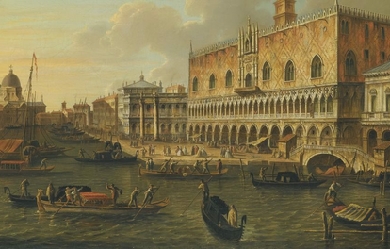
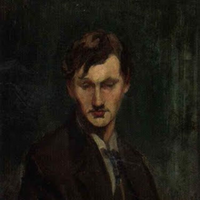
Lionel Pigot Johnson (15 March 1867– 4 October 1902) was an English poet, essayist and critic. Life Johnson was born at Broadstairs, and educated at Winchester College and New College, Oxford, graduating in 1890. He became a Catholic convert in 1891. He lived a solitary life in London, struggling with alcoholism and his repressed homosexuality. He died of a stroke after a fall in the street, though it was said to be a fall from a barstool in the Green Dragon in Fleet Street. During his lifetime were published his The Art of Thomas Hardy (1894), Poems (1895), Ireland and Other Poems (1897). He was one of the Rhymers’ Club, and cousin to Olivia Shakespear (who dedicated her novel The False Laurel to him). In June 1891, Johnson converted to Catholicism, at the same time as he introduced his cousin Lord Alfred Douglas to his friend Oscar Wilde, whom he then repudiated, directing a sonnet at him called “The Destroyer of a Soul” (1892). In 1893, Johnson wrote what some consider his masterpiece, “The Dark Angel”. “The Dark Angel” also served as one of the influences for the Dark Angels chapter of Space Marines in the Warhammer 40,000 fictional universe. Their Primarch, Lion El’Jonson, is also named after the poet. References Wikipedia—https://en.wikipedia.org/wiki/Lionel_Johnson
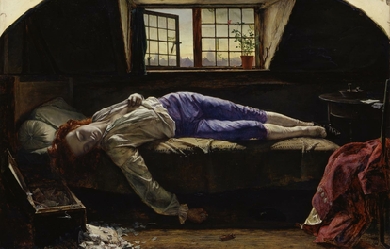
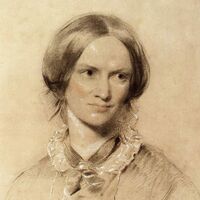
Charlotte Brontë (21 April 1816 – 31 March 1855) was an English novelist and poet, the eldest of the three Brontë sisters who survived into adulthood, whose novels are English literature standards. She wrote Jane Eyre under the pen name Currer Bell. Early life and education Charlotte was born in Thornton, Yorkshire in 1816, the third of six children, to Maria (née Branwell) and her husband Patrick Brontë (formerly surnamed Brunty or Prunty), an Irish Anglican clergyman. In 1820, the family moved a few miles to the village of Haworth, where Patrick had been appointed Perpetual Curate of St Michael and All Angels Church. Charlotte's mother died of cancer on 15 September 1821, leaving five daughters and a son to be taken care of by her sister Elizabeth Branwell. In August 1824, Charlotte was sent with three of her sisters, Emily, Maria, and Elizabeth, to the Clergy Daughters' School at Cowan Bridge in Lancashire (She used the school as the basis for Lowood School in Jane Eyre). The school's poor conditions, Charlotte maintained, permanently affected her health and physical development and hastened the deaths of her two elder sisters, Maria (born 1814) and Elizabeth (born 1815), who died of tuberculosis in June 1825. Soon after their deaths, her father removed Charlotte and Emily from the school. At home in Haworth Parsonage Charlotte acted as "the motherly friend and guardian of her younger sisters". She and her surviving siblings — Branwell, Emily, and Anne – created their own literary fictional worlds, and began chronicling the lives and struggles of the inhabitants of these imaginary kingdoms. Charlotte and Branwell wrote Byronic stories about their imagined country, "Angria", and Emily and Anne wrote articles and poems about "Gondal". The sagas they created were elaborate and convoluted (and still exist in partial manuscripts) and provided them with an obsessive interest during childhood and early adolescence, which prepared them for their literary vocations in adulthood. Charlotte continued her education at Roe Head in Mirfield, from 1831 to 1832, where she met her lifelong friends and correspondents, Ellen Nussey and Mary Taylor. Shortly after she wrote the novella The Green Dwarf (1833) using the name Wellesley. Charlotte returned to Roe Head as a teacher from 1835 to 1838. In 1839, she took up the first of many positions as governess to families in Yorkshire, a career she pursued until 1841. Politically a Tory, she preached tolerance rather than revolution. She held high moral principles, and, despite her shyness in company, was always prepared to argue her beliefs. Brussels In 1842 Charlotte and Emily travelled to Brussels to enrol in a boarding school run by Constantin Heger (1809–96) and his wife Claire Zoé Parent Heger (1804–87). In return for board and tuition, Charlotte taught English and Emily taught music. Their time at the boarding school was cut short when Elizabeth Branwell, their aunt who joined the family after the death of their mother to look after the children, died of internal obstruction in October 1842. Charlotte returned alone to Brussels in January 1843 to take up a teaching post at the school. Her second stay was not a happy one; she became lonely, homesick and deeply attached to Constantin Heger. She returned to Haworth in January 1844 and used her time at the boarding school as the inspiration for some experiences in The Professor and Villette. First publication In May 1846, Charlotte, Emily, and Anne self-financed the publication of a joint collection of poetry under the assumed names of Currer, Ellis and Acton Bell. These pseudonyms veiled the sisters' gender whilst preserving their real initials, thus Charlotte was "Currer Bell". "Bell" was the middle name of Haworth's curate, Arthur Bell Nicholls, whom Charlotte later married. On the decision to use noms de plume, Charlotte wrote: Averse to personal publicity, we veiled our own names under those of Currer, Ellis and Acton Bell; the ambiguous choice being dictated by a sort of conscientious scruple at assuming Christian names positively masculine, while we did not like to declare ourselves women, because — without at that time suspecting that our mode of writing and thinking was not what is called 'feminine' – we had a vague impression that authoresses are liable to be looked on with prejudice; we had noticed how critics sometimes use for their chastisement the weapon of personality, and for their reward, a flattery, which is not true praise. Although only two copies of the collection of poetry were sold, the sisters continued writing for publication and began their first novels, continuing to use their noms de plume when sending manuscripts to potential publishers. Jane Eyre Charlotte's first manuscript, The Professor, did not secure a publisher, although she was heartened by an encouraging response from Smith, Elder & Co of Cornhill, who expressed an interest in any longer works which "Currer Bell" might wish to send. Charlotte responded by finishing and sending a second manuscript in August 1847, and six weeks later Jane Eyre: An Autobiography, was published. Jane Eyre was a success, and initially received favourable reviews. There was speculation about the identity of Currer Bell, and whether Bell was a man or a woman. The speculation heightened on the subsequent publication of novels by Charlotte's sisters: Emily's Wuthering Heights by "Ellis Bell" and Anne's Agnes Grey by "Acton Bell". Accompanying the speculation was a change in the critical reaction to Charlotte's work; accusations began to be made that Charlotte's writing was "coarse", a judgement which was made more readily once it was suspected that "Currer Bell" was a woman. However sales of Jane Eyre continued to be strong, and may even have increased due to the novel's developing reputation as an 'improper' book. Shirley and family bereavements Following the success of Jane Eyre, in 1848 Charlotte began work on the manuscript of her second novel, Shirley. The manuscript was only partially completed when the Brontë household suffered a tragic turn of events, experiencing the deaths of three family members within eight months. In September 1848 Charlotte's only brother, Branwell, died of chronic bronchitis and marasmus exacerbated by heavy drinking, although Charlotte believed his death was due to tuberculosis. Branwell was a suspected "opium eater", a laudanum addict. Emily became seriously ill shortly after Branwell's funeral, and died of pulmonary tuberculosis in December 1848. Anne died of the same disease in May 1849. Charlotte was unable to write at this time. After Anne's death Charlotte resumed writing as a way of dealing with her grief, and Shirley was published in October 1849. Shirley deals with the themes of industrial unrest and the role of women in society. Unlike Jane Eyre, which is written from the first-person perspective of the main character, Shirley is written in the third-person and lacks the emotional immediacy of Jane Eyre, and reviewers found it less shocking. In society In view of the success of her novels, particularly Jane Eyre, Charlotte was persuaded by her publisher to visit London occasionally, where she revealed her true identity and began to move in a more exalted social circle, becoming friends with Harriet Martineau and Elizabeth Gaskell, and acquainted with William Makepeace Thackeray and G. H. Lewes. She never left Haworth for more than a few weeks at a time as she did not want to leave her ageing father's side. Thackeray’s daughter, the writer Anne Isabella Thackeray Ritchie recalled a visit to her father by Charlotte: …two gentlemen come in, leading a tiny, delicate, serious, little lady, with fair straight hair, and steady eyes. She may be a little over thirty; she is dressed in a little barège dress with a pattern of faint green moss. She enters in mittens, in silence, in seriousness; our hearts are beating with wild excitement. This then is the authoress, the unknown power whose books have set all London talking, reading, speculating; some people even say our father wrote the books – the wonderful books… The moment is so breathless that dinner comes as a relief to the solemnity of the occasion, and we all smile as my father stoops to offer his arm; for, genius though she may be, Miss Brontë can barely reach his elbow. My own personal impressions are that she is somewhat grave and stern, specially to forward little girls who wish to chatter… Every one waited for the brilliant conversation which never began at all. Miss Brontë retired to the sofa in the study, and murmured a low word now and then to our kind governess… the conversation grew dimmer and more dim, the ladies sat round still expectant, my father was too much perturbed by the gloom and the silence to be able to cope with it at all… after Miss Brontë had left, I was surprised to see my father opening the front door with his hat on. He put his fingers to his lips, walked out into the darkness, and shut the door quietly behind him… long afterwards… Mrs. Procter asked me if I knew what had happened… It was one of the dullest evenings [Mrs Procter] had ever spent in her life… the ladies who had all come expecting so much delightful conversation, and the gloom and the constraint, and how finally, overwhelmed by the situation, my father had quietly left the room, left the house, and gone off to his club. Friendship with Elizabeth Gaskell Charlotte sent copies of Shirley to leading authors of the day, including Elizabeth Gaskell. Gaskell and Charlotte met in August 1850 and began a friendship which, whilst not necessarily close, was significant in that Gaskell wrote Charlotte's biography after her death in 1855. The Life of Charlotte Brontë, was published in 1857 and was unusual at the time in that, rather than analysing its subject's achievements, it concentrated on the private details of Charlotte's life, in particular placing emphasis on aspects which countered the accusations of 'coarseness' which had been levelled at Charlotte's writing. Though frank in places, Gaskell was selective about which details she revealed; for example, she suppressed details of Charlotte's love for Heger, a married man, as being too much of an affront to contemporary morals and as a source of distress to Charlotte's still-living friends, father and husband. Gaskell also provided doubtful and inaccurate information about Patrick Brontë, claiming, for example, that he did not allow his children to eat meat. This is refuted by one of Emily Brontë's diary papers, in which she describes the preparation of meat and potatoes for dinner at the parsonage, as Juliet Barker points out in her biography, The Brontës. It has been argued that the particular approach of Mrs Gaskell transferred the focus of attention away from the 'difficult' novels, not just of Charlotte but all the sisters, and began a process of sanctification of their private lives. Villette Charlotte's third published novel, and the last to be published during her lifetime, was Villette, which came out in 1853. Its main themes include isolation, how such a condition can be borne, and the internal conflict brought about by societal repression of individual desire. Its main character, Lucy Snowe, travels abroad to teach in a boarding school in the fictional town of Villette, where she encounters a culture and religion different to her own, and where she falls in love with a man ('Paul Emanuel') whom she cannot marry. Her experiences result in her having a breakdown, but eventually she achieves independence and fulfilment in running her own school. Villette marked Charlotte's return to writing from a first-person perspective (that of Lucy Snowe), a technique she had used successfully in Jane Eyre. Another similarity to Jane Eyre was Charlotte's use of aspects from her own life as inspiration for fictional events, in particular reworking her time spent at the pensionnat in Brussels into Lucy spending time teaching at the boarding school, and falling in love with Constantin Heger into Lucy falling in love with 'Paul Emanuel'. Villette was acknowledged by the critics of the day as a potent and sophisticated piece of writing, although it was criticised for its 'coarseness' and not suitably 'feminine' in its portrayal of Lucy's desires. Illness and subsequent death In June 1854, Charlotte married Arthur Bell Nicholls, her father's curate and possibly the model for Jane Eyre's St. John Rivers. She became pregnant soon after the marriage. Her health declined rapidly during this time, and according to Gaskell, she was attacked by "sensations of perpetual nausea and ever-recurring faintness." Charlotte died, with her unborn child, on 31 March 1855, at the age of 38. Her death certificate gives the cause of death as phthisis (tuberculosis), but many biographers[who?] suggest she may have died from dehydration and malnourishment, caused by excessive vomiting from severe morning sickness or hyperemesis gravidarum. There is evidence to suggest that Charlotte died from typhus she may have caught from Tabitha Ackroyd, the Brontë household's oldest servant, who died shortly before her. Charlotte was interred in the family vault in the Church of St Michael and All Angels at Haworth. Posthumously, her first-written novel was published in 1857. The fragment she worked on in her last years in 1860 has been twice completed by recent authors, the more famous version being Emma Brown: A Novel from the Unfinished Manuscript by Charlotte Brontë by Clare Boylan in 2003. Much Angria material has appeared in published form since the author's death.
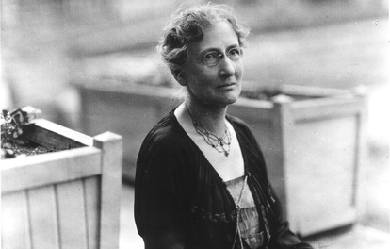
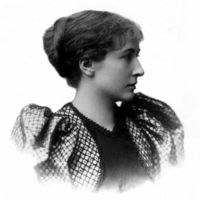
Harriet Monroe (December 23, 1860– September 26, 1936) was an American editor, scholar, literary critic, poet and patron of the arts. She is best known as the founding publisher and long-time editor of Poetry magazine, which made its debut in 1912. As a supporter of the poets Wallace Stevens, Ezra Pound, H. D., T. S. Eliot, William Carlos Williams, Carl Sandburg, Max Michelson and others, she played an important role in the development of modern poetry. Because she was a longtime correspondent of the poets she supported, her letters provide a wealth of information on their thoughts and motives. Monroe was born in Chicago, Illinois. She read at an early age; her father had a large library that provided refuge from domestic discord. In her autobiography, A Poet’s Life: Seventy Years in a Changing World, published two years after her death, Monroe recalls: “I started in early with Shakespeare, Byron, Shelley, with Dickens and Thackeray; and always the book-lined library gave me a friendly assurance of companionship with lively and interesting people, gave me friends of the spirit to ease my loneliness.”
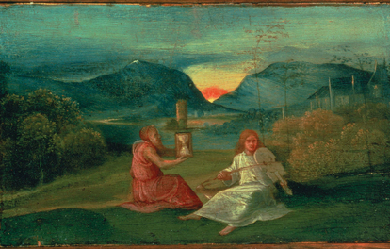
Good day. How you holding up?! I am 25 years old and living in a big city with bigger dreams. I have always found writing to be the most sophisticated way to express one's innermost turmoil. Currently, I'm pursuing a career in finance while being in the process of earning my CHARTERED ACCOUNTACY degree and bachelors in Law. As an introvert, I have always found solace and friends with words and books. I began writing when I was 12 years old and I have not stopped since. However, this will be the first time that anyone but myself will have access to my prose, poetry or any other writing material. Thank you. Love, Sharayu


Born in Lowell, Massachusetts on March 12, 1922, Jack Kerouac was baptised Jean Louis Kirouac, the youngest of three children of French-Canadian immigrants from Quebec, Canada. He was raised speaking the French-Canadian working class dialect Joual until he learned English at age five. Kerouac studied at local Catholic public schools and the Horace Mann School in New York City, as well as Columbia University and The New School. He was awarded athletic scholarships to attend Boston College, Notre Dame and Columbia, though an injury during his freshman season at Columbia kept him from playing and eventually led to his dropping out of school. In 1942, Kerouac joined the United States Merchant Marine, and a year later joined the United States Navy—he served only eight days of active duty before being honorably discharged on psychiatric grounds. Soon after, Kerouac was involved as an accessory in the murder of David Kammerer, having helped his friend Lucien Carr dispose of evidence, and was arrested as a material witness. Unable to convince his father to pay for bail, Kerouac agreed to marry fellow writer Edie Parker, who supported him financially, and moved to Detroit, Michigan. Their marriage was quickly annulled due to infidelity, and Kerouac returned to New York in 1944. Upon Kerouac's return to New York, he lived with his parents in Queens, where he wrote his first novel, The Town and the City (1950). Through Lucien Carr, Kerouac had met many of the literary figures now associated with the Beat Generation, including Allen Ginsberg and William S. Burroughs, and in 1949 began his most famous literary work, On the Road, which was tentatively titled "The Beat Generation" and "Gone on the Road". Kerouac finished the largely autobiographical novel in April 1951, though it remained unpublished until 1957. During that time, Kerouac completed ten other autobiographical novels, including The Subterraneans, Doctor Sax, Tristessa, and Desolation Angels. In July of 1957, Kerouac moved to Orlando, Florida, while awaiting the release of On the Road (Viking Press) later that year. Soon after, the New York Times ran a review lauding Kerouac as the voice of a new generation. The success of the novel garnered Kerouac celebrity status as a major American author, and his friendship with Ginsberg, Burroughs, and Gregory Corso cemented the influence of what became known as the Beat Generation. Other poet friends of Kerouac include Philip Lamantia, Gary Snyder, Philip Whalen, Lawrence Ferlinghetti, Michael McClure, Bob Kaufman, Diane di Prima, Lew Welch, and Amiri Baraka. Though best known for his novels, Kerouac is also associated with poetry of the Beat movement, including spoken word. Kerouac wrote that he wanted "to be considered as a jazz poet blowing a long blues in an afternoon jazz session on Sunday." And in his "Statement on Poetics" for The New American Poetry, he asserts: "Add alluvials to the end of your line when all is exhausted but something has to be said for some specified irrational reason, since reason can never win out, because poetry is NOT a science. The rhythm of how you 'rush' yr statement determines the rhythm of the poem, whether it is a poem in verse-separated lines, or an endless one-line poem called prose . . ." In his introduction to Kerouac's Book of Blues, the poet Robert Creeley writes, "A complaint commonly lodged against Kerouac is that he was at best a self-taught 'natural,' at worst an example of the cul de sac the autodidact in the arts invariably comes to, a solipsistic 'world' of his own limitations and confusions." He goes on to state that Kerouac's poems themselves "provide an intensely vivid witness of both writer and time." Other books published later in Kerouac's career include The Dharma Bums and Big Sur. Jack Kerouac died from a chronic liver disease on October 21, 1969 at St. Anthony's Hospital in St. Petersburg, Florida, the result of a lifetime of heavy drinking. References Poets.org - http://www.poets.org/poet.php/prmPID/1016
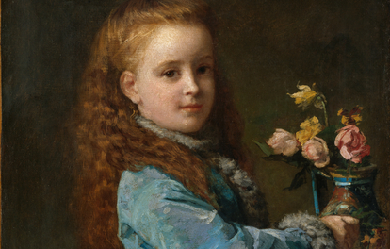
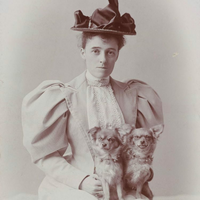
Edith Wharton (born Edith Newbold Jones; January 24, 1862– August 11, 1937) was a Pulitzer Prize-winning American novelist, short story writer, and designer. She was nominated for the Nobel Prize in Literature in 1927, 1928 and 1930. Wharton combined her insider’s view of America’s privileged classes with a brilliant, natural wit to write humorous, incisive novels and short stories of social and psychological insight. She was well acquainted with many of her era’s other literary and public figures, including Theodore Roosevelt.


Throughout the years, the reasoning behind my writing has changed. Maybe it was a broken heart, a bad experience, falling in love or out of touch, finding myself, getting lost, escaping the crazy world we live in. Whatever the reason, writing is my solace. It’s the one place I can be completely at one with myself, where I am harmonious and comfortable with the ugly truths being human. I aim to paint the minds of others the way my experiences have painted mine, and hopefully share in my words the feelings I so deeply feel immersed in. Welcome to my world.
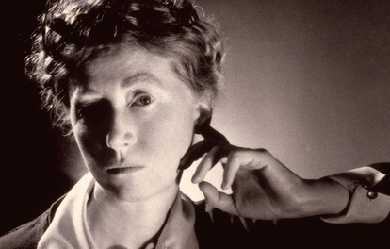
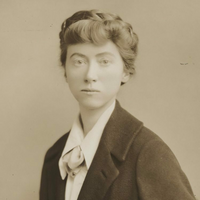
Born near St. Louis, Missouri, on November 15, 1887, Marianne Moore was raised in the home of her grandfather, a Presbyterian pastor. After her grandfather's death, in 1894, Moore and her family stayed with other relatives, and in 1896 they moved to Carlisle, Pennsylvania. She attended Bryn Mawr College and received her B.A. in 1909. Following graduation, Moore studied typing at Carlisle Commercial College, and from 1911 to 1915 she was employed as a school teacher at the Carlisle Indian School. In 1918, Moore and her mother moved to New York City, and in 1921, she became an assistant at the New York Public Library. She began to meet other poets, such as William Carlos Williams and Wallace Stevens, and to contribute to the Dial, a prestigious literary magazine. She served as acting editor of the Dial from 1925 to 1929. Along with the work of such other members of the Imagist movement as Ezra Pound, Williams, and H. D., Moore's poems were published in the Egoist, an English magazine, beginning in 1915. In 1921, H.D. published Moore's first book, Poems, without her knowledge. Moore was widely recognized for her work; among her many honors were the Bollingen prize, the National Book Award, and the Pulitzer Prize. She wrote with the freedom characteristic of the other modernist poets, often incorporating quotes from other sources into the text, yet her use of language was always extraordinarily condensed and precise, capable of suggesting a variety of ideas and associations within a single, compact image. In his 1925 essay "Marianne Moore," William Carlos Williams wrote about Moore's signature mode, the vastness of the particular: "So that in looking at some apparently small object, one feels the swirl of great events." She was particularly fond of animals, and much of her imagery is drawn from the natural world. She was also a great fan of professional baseball and an admirer of Muhammed Ali, for whom she wrote the liner notes to his record, I Am the Greatest! Deeply attached to her mother, she lived with her until Mrs. Moore's death in 1947. Marianne Moore died in New York City in 1972. Poetry Collected Poems (1951) Like a Bulwark (1956) Nevertheless (1944) O to Be a Dragon (1959) Observations (1924) Poems (1921) Selected Poems (1935) Tell Me, Tell Me (1966) The Arctic Fox (1964) The Complete Poems of Marianne Moore (1967) The Pangolin and Other Verse (1936) What Are Years? (1941) Prose A Marianne Moore Reader (1961) Predilections (1955) The Complete Prose of Marianne Moore (1987)
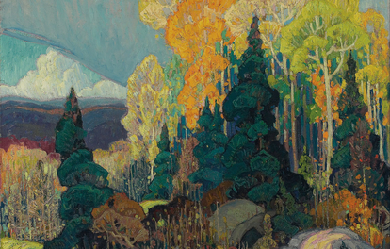
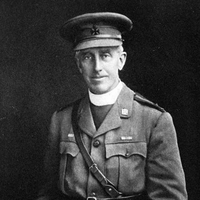
Frederick George Scott (7 April 1861– 19 January 1944) was a Canadian poet and author, known as the Poet of the Laurentians. He is sometimes associated with Canada’s Confederation Poets, a group that included Charles G.D. Roberts, Bliss Carman, Archibald Lampman, and Duncan Campbell Scott. Scott published 13 books of Christian and patriotic poetry. Scott was a British imperialist who wrote many hymns to the British Empire—eulogizing his country’s roles in the Boer Wars and World War I. Many of his poems use the natural world symbolically to convey deeper spiritual meaning. Frederick George Scott was the father of poet F. R. Scott.
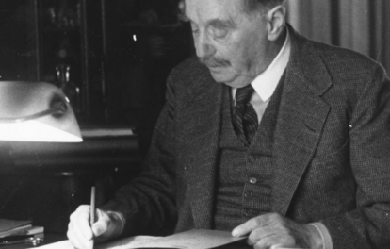
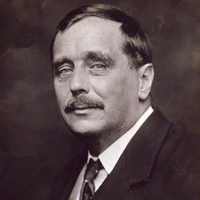
Herbert George Wells (21 September 1866 – 13 August 1946) was an English writer. He was prolific in many genres, writing dozens of novels, short stories, and works of social commentary, history, satire, biography, and autobiography, and even including two books on recreational war games. He is now best remembered for his science fiction novels and is often called the “father of science fiction”, along with Jules Verne and Hugo Gernsback.During his own lifetime, however, he was most prominent as a forward-looking, even prophetic social critic who devoted his literary talents to the development of a progressive vision on a global scale. A futurist, he wrote a number of utopian works and foresaw the advent of aircraft, tanks, space travel, nuclear weapons, satellite television and something resembling the World Wide Web. His science fiction imagined time travel, alien invasion, invisibility, and biological engineering. Brian Aldiss referred to Wells as the “Shakespeare of science fiction”. Wells rendered his works convincing by instilling commonplace detail alongside a single extraordinary assumption – dubbed “Wells’s law” – leading Joseph Conrad to hail him in 1898 as “O Realist of the Fantastic!”. His most notable science fiction works include The Time Machine (1895), The Island of Doctor Moreau (1896), The Invisible Man (1897), The War of the Worlds (1898) and the military science fiction The War in the Air (1907). Wells was nominated for the Nobel Prize in Literature four times.Wells’s earliest specialised training was in biology, and his thinking on ethical matters took place in a specifically and fundamentally Darwinian context. He was also from an early date an outspoken socialist, often (but not always, as at the beginning of the First World War) sympathising with pacifist views. His later works became increasingly political and didactic, and he wrote little science fiction, while he sometimes indicated on official documents that his profession was that of journalist. Novels such as Kipps and The History of Mr Polly, which describe lower-middle-class life, led to the suggestion that he was a worthy successor to Charles Dickens, but Wells described a range of social strata and even attempted, in Tono-Bungay (1909), a diagnosis of English society as a whole. Wells was a diabetic and co-founded the charity The Diabetic Association (known today as Diabetes UK) in 1934. Life Early life Herbert George Wells was born at Atlas House, 162 High Street in Bromley, Kent, on 21 September 1866. Called “Bertie” in the family, he was the fourth and last child of Joseph Wells (a former domestic gardener, and at the time a shopkeeper and professional cricketer) and his wife, Sarah Neal (a former domestic servant). An inheritance had allowed the family to acquire a shop in which they sold china and sporting goods, although it failed to prosper: the stock was old and worn out, and the location was poor. Joseph Wells managed to earn a meagre income, but little of it came from the shop and he received an unsteady amount of money from playing professional cricket for the Kent county team. Payment for skilled bowlers and batsmen came from voluntary donations afterwards, or from small payments from the clubs where matches were played. A defining incident of young Wells’s life was an accident in 1874 that left him bedridden with a broken leg. To pass the time he began to read books from the local library, brought to him by his father. He soon became devoted to the other worlds and lives to which books gave him access; they also stimulated his desire to write. Later that year he entered Thomas Morley’s Commercial Academy, a private school founded in 1849, following the bankruptcy of Morley’s earlier school. The teaching was erratic, the curriculum mostly focused, Wells later said, on producing copperplate handwriting and doing the sort of sums useful to tradesmen. Wells continued at Morley’s Academy until 1880. In 1877, his father, Joseph Wells, suffered a fractured thigh. The accident effectively put an end to Joseph’s career as a cricketer, and his subsequent earnings as a shopkeeper were not enough to compensate for the loss of the primary source of family income. No longer able to support themselves financially, the family instead sought to place their sons as apprentices in various occupations. From 1880 to 1883, Wells had an unhappy apprenticeship as a draper at the Southsea Drapery Emporium, Hyde’s. His experiences at Hyde’s, where he worked a thirteen-hour day and slept in a dormitory with other apprentices, later inspired his novels The Wheels of Chance, The History of Mr Polly, and Kipps, which portray the life of a draper’s apprentice as well as providing a critique of society’s distribution of wealth.Wells’s parents had a turbulent marriage, owing primarily to his mother’s being a Protestant and his father’s being a freethinker. When his mother returned to work as a lady’s maid (at Uppark, a country house in Sussex), one of the conditions of work was that she would not be permitted to have living space for her husband and children. Thereafter, she and Joseph lived separate lives, though they never divorced and remained faithful to each other. As a consequence, Herbert’s personal troubles increased as he subsequently failed as a draper and also, later, as a chemist’s assistant. However, Uppark had a magnificent library in which he immersed himself, reading many classic works, including Plato’s Republic, Thomas More’s Utopia, and the works of Daniel Defoe. This would be the beginning of Wells’s venture into literature. Teacher In October 1879, Wells’s mother arranged through a distant relative, Arthur Williams, for him to join the National School at Wookey in Somerset as a pupil–teacher, a senior pupil who acted as a teacher of younger children. In December that year, however, Williams was dismissed for irregularities in his qualifications and Wells was returned to Uppark. After a short apprenticeship at a chemist in nearby Midhurst and an even shorter stay as a boarder at Midhurst Grammar School, he signed his apprenticeship papers at Hyde’s. In 1883, Wells persuaded his parents to release him from the apprenticeship, taking an opportunity offered by Midhurst Grammar School again to become a pupil–teacher; his proficiency in Latin and science during his earlier short stay had been remembered.The years he spent in Southsea had been the most miserable of his life to that point, but his good fortune at securing a position at Midhurst Grammar School meant that Wells could continue his self-education in earnest. The following year, Wells won a scholarship to the Normal School of Science (later the Royal College of Science in South Kensington, now part of Imperial College London) in London, studying biology under Thomas Henry Huxley. As an alumnus, he later helped to set up the Royal College of Science Association, of which he became the first president in 1909. Wells studied in his new school until 1887, with a weekly allowance of 21 shillings (a guinea) thanks to his scholarship. This ought to have been a comfortable sum of money (at the time many working class families had “round about a pound a week” as their entire household income) yet in his Experiment in Autobiography, Wells speaks of constantly being hungry, and indeed photographs of him at the time show a youth who is very thin and malnourished. He soon entered the Debating Society of the school. These years mark the beginning of his interest in a possible reformation of society. At first approaching the subject through Plato’s Republic, he soon turned to contemporary ideas of socialism as expressed by the recently formed Fabian Society and free lectures delivered at Kelmscott House, the home of William Morris. He was also among the founders of The Science School Journal, a school magazine that allowed him to express his views on literature and society, as well as trying his hand at fiction; a precursor to his novel The Time Machine was published in the journal under the title The Chronic Argonauts. The school year 1886–87 was the last year of his studies.During 1888, Wells stayed in Stoke-on-Trent, living in Basford. The unique environment of The Potteries was certainly an inspiration. He wrote in a letter to a friend from the area that “the district made an immense impression on me.” The inspiration for some of his descriptions in The War of the Worlds is thought to have come from his short time spent here, seeing the iron foundry furnaces burn over the city, shooting huge red light into the skies. His stay in The Potteries also resulted in the macabre short story “The Cone” (1895, contemporaneous with his famous The Time Machine), set in the north of the city.After teaching for some time, he was briefly on the staff of Holt Academy in Wales – Wells found it necessary to supplement his knowledge relating to educational principles and methodology and entered the College of Preceptors (College of Teachers). He later received his Licentiate and Fellowship FCP diplomas from the College. It was not until 1890 that Wells earned a Bachelor of Science degree in zoology from the University of London External Programme. In 1889–90, he managed to find a post as a teacher at Henley House School in London, where he taught A. A. Milne (whose father ran the school). His first published work was a Text-Book of Biology in two volumes (1893).Upon leaving the Normal School of Science, Wells was left without a source of income. His aunt Mary—his father’s sister-in-law—invited him to stay with her for a while, which solved his immediate problem of accommodation. During his stay at his aunt’s residence, he grew increasingly interested in her daughter, Isabel. He would later go on to court her. To earn money, he began writing short humorous articles for journals such as The Pall Mall Gazette, later collecting these in volume form as Select Conversations with an Uncle (1895) and Certain Personal Matters (1897). So prolific did Wells become at this mode of journalism that many of his early pieces remain unidentified. According to David C Smith, "Most of Wells’s occasional pieces have not been collected, and many have not even been identified as his. Wells did not automatically receive the byline his reputation demanded until after 1896 or so... As a result, many of his early pieces are unknown. It is obvious that many early Wells items have been lost." His success with these shorter pieces encouraged him to write book-length work, and he published his first novel, The Time Machine, in 1895. Personal life In 1891, Wells married his cousin Isabel Mary Wells (1865–1931; from 1902 Isabel Mary Smith). The couple agreed to separate in 1894, when he had fallen in love with one of his students, Amy Catherine Robbins (1872–1927; later known as Jane), with whom he moved to Woking, Surrey in May 1895. They lived in a rented house, 'Lynton’, (now No.141) Maybury Road in the town centre for just under 18 months and married at St Pancras register office in October 1895. His short period in Woking was perhaps the most creative and productive of his whole writing career, for while there he planned and wrote The War of the Worlds and The Time Machine, completed The Island of Doctor Moreau, wrote and published The Wonderful Visit and The Wheels of Chance, and began writing two other early books, When the Sleeper Wakes and Love and Mr Lewisham.In late summer 1896, Wells and Jane moved to a larger house in Worcester Park, near Kingston upon Thames, for two years; this lasted until his poor health took them to Sandgate, near Folkestone, where he constructed a large family home, Spade House, in 1901. He had two sons with Jane: George Philip (known as “Gip”; 1901–1985) and Frank Richard (1903–1982). Jane died 6 October 1927, in Dunmow, at the age of 55. Wells had affairs with a significant number of women. In December 1909, he had a daughter, Anna-Jane, with the writer Amber Reeves, whose parents, William and Maud Pember Reeves, he had met through the Fabian Society. Amber had married the barrister G. R. Blanco White in July of that year, as co-arranged by Wells. After Beatrice Webb voiced disapproval of Wells’ “sordid intrigue” with Amber, he responded by lampooning Beatrice Webb and her husband Sidney Webb in his 1911 novel The New Machiavelli as 'Altiora and Oscar Bailey’, a pair of short-sighted, bourgeois manipulators. Between 1910–1913, novelist Elizabeth von Arnim was one of his mistresses. In 1914, he had a son, Anthony West (1914–1987), by the novelist and feminist Rebecca West, 26 years his junior. In 1920–21, and intermittently until his death, he had a love affair with the American birth control activist Margaret Sanger. Between 1924 and 1933 he partnered with the 22-year younger Dutch adventurer and writer Odette Keun, with whom he lived in Lou Pidou, a house they built together in Grasse, France. Wells dedicated his longest book to her (The World of William Clissold, 1926). When visiting Maxim Gorky in Russia 1920, he had slept with Gorky’s mistress Moura Budberg, then still Countess Benckendorf and 27 years his junior. In 1933, when she left Gorky and emigrated to London, their relationship renewed and she cared for him through his final illness. Wells asked her to marry him repeatedly, but Budberg strongly rejected his proposals.In Experiment in Autobiography (1934), Wells wrote: “I was never a great amorist, though I have loved several people very deeply”.David Lodge’s novel A Man of Parts (2011)—a 'narrative based on factual sources’ (author’s note)—gives a convincing and generally sympathetic account of Wells’s relations with the women mentioned above, and others.Director Simon Wells (born 1961), the author’s great-grandson, was a consultant on the future scenes in Back to the Future Part II (1989). Artist One of the ways that Wells expressed himself was through his drawings and sketches. One common location for these was the endpapers and title pages of his own diaries, and they covered a wide variety of topics, from political commentary to his feelings toward his literary contemporaries and his current romantic interests. During his marriage to Amy Catherine, whom he nicknamed Jane, he drew a considerable number of pictures, many of them being overt comments on their marriage. During this period, he called these pictures “picshuas”. These picshuas have been the topic of study by Wells scholars for many years, and in 2006, a book was published on the subject. Writer Some of his early novels, called “scientific romances”, invented several themes now classic in science fiction in such works as The Time Machine, The Island of Doctor Moreau, The Invisible Man, The War of the Worlds, When the Sleeper Wakes, and The First Men in the Moon. He also wrote realistic novels that received critical acclaim, including Kipps and a critique of English culture during the Edwardian period, Tono-Bungay. Wells also wrote dozens of short stories and novellas, including, “The Flowering of the Strange Orchid”, which helped bring the full impact of Darwin’s revolutionary botanical ideas to a wider public, and was followed by many later successes such as “The Country of the Blind” (1904).According to James Gunn, one of Wells’s major contributions to the science fiction genre was his approach, which he referred to as his “new system of ideas”. In his opinion, the author should always strive to make the story as credible as possible, even if both the writer and the reader knew certain elements are impossible, allowing the reader to accept the ideas as something that could really happen, today referred to as “the plausible impossible” and “suspension of disbelief”. While neither invisibility nor time travel was new in speculative fiction, Wells added a sense of realism to the concepts which the readers were not familiar with. He conceived the idea of using a vehicle that allows an operator to travel purposely and selectively forwards or backwards in time. The term “time machine”, coined by Wells, is now almost universally used to refer to such a vehicle. He explained that while writing The Time Machine, he realized that “the more impossible the story I had to tell, the more ordinary must be the setting, and the circumstances in which I now set the Time Traveller were all that I could imagine of solid upper-class comforts.” In “Wells’s Law”, a science fiction story should contain only a single extraordinary assumption. Being aware the notion of magic as something real had disappeared from society, he, therefore, used scientific ideas and theories as a substitute for magic to justify the impossible. Wells’s best-known statement of the “law” appears in his introduction to The Scientific Romances of H. G. Wells (1933), As soon as the magic trick has been done the whole business of the fantasy writer is to keep everything else human and real. Touches of prosaic detail are imperative and a rigorous adherence to the hypothesis. Any extra fantasy outside the cardinal assumption immediately gives a touch of irresponsible silliness to the invention. Dr. Griffin / The Invisible Man is a brilliant research scientist who discovers a method of invisibility, but finds himself unable to reverse the process. An enthusiast of random and irresponsible violence, Griffin has become an iconic character in horror fiction. The Island of Doctor Moreau sees a shipwrecked man left on the island home of Doctor Moreau, a mad scientist who creates human-like hybrid beings from animals via vivisection. The earliest depiction of uplift, the novel deals with a number of philosophical themes, including pain and cruelty, moral responsibility, human identity, and human interference with nature. Though Tono-Bungay is not a science-fiction novel, radioactive decay plays a small but consequential role in it. Radioactive decay plays a much larger role in The World Set Free (1914). This book contains what is surely his biggest prophetic “hit”, with the first description of a nuclear weapon. Scientists of the day were well aware that the natural decay of radium releases energy at a slow rate over thousands of years. The rate of release is too slow to have practical utility, but the total amount released is huge. Wells’s novel revolves around an (unspecified) invention that accelerates the process of radioactive decay, producing bombs that explode with no more than the force of ordinary high explosives—but which “continue to explode” for days on end. “Nothing could have been more obvious to the people of the earlier twentieth century”, he wrote, "than the rapidity with which war was becoming impossible... [but] they did not see it until the atomic bombs burst in their fumbling hands". In 1932, the physicist and conceiver of nuclear chain reaction Leó Szilárd read The World Set Free (the same year Sir James Chadwick discovered the neutron), a book which he said made a great impression on him. Wells also wrote non-fiction. His first non-fiction bestseller was Anticipations of the Reaction of Mechanical and Scientific Progress upon Human Life and Thought (1901). When originally serialised in a magazine it was subtitled “An Experiment in Prophecy”, and is considered his most explicitly futuristic work. It offered the immediate political message of the privileged sections of society continuing to bar capable men from other classes from advancement until war would force a need to employ those most able, rather than the traditional upper classes, as leaders. Anticipating what the world would be like in the year 2000, the book is interesting both for its hits (trains and cars resulting in the dispersion of populations from cities to suburbs; moral restrictions declining as men and women seek greater sexual freedom; the defeat of German militarism, and the existence of a European Union) and its misses (he did not expect successful aircraft before 1950, and averred that “my imagination refuses to see any sort of submarine doing anything but suffocate its crew and founder at sea”).His bestselling two-volume work, The Outline of History (1920), began a new era of popularised world history. It received a mixed critical response from professional historians. However, it was very popular amongst the general population and made Wells a rich man. Many other authors followed with “Outlines” of their own in other subjects. He reprised his Outline in 1922 with a much shorter popular work, A Short History of the World, a history book praised by Albert Einstein, and two long efforts, The Science of Life (1930) and The Work, Wealth and Happiness of Mankind (1931). The “Outlines” became sufficiently common for James Thurber to parody the trend in his humorous essay, “An Outline of Scientists”—indeed, Wells’s Outline of History remains in print with a new 2005 edition, while A Short History of the World has been re-edited (2006). From quite early in Wells’s career, he sought a better way to organise society and wrote a number of Utopian novels. The first of these was A Modern Utopia (1905), which shows a worldwide utopia with “no imports but meteorites, and no exports at all”; two travellers from our world fall into its alternate history. The others usually begin with the world rushing to catastrophe, until people realise a better way of living: whether by mysterious gases from a comet causing people to behave rationally and abandoning a European war (In the Days of the Comet (1906)), or a world council of scientists taking over, as in The Shape of Things to Come (1933, which he later adapted for the 1936 Alexander Korda film, Things to Come). This depicted, all too accurately, the impending World War, with cities being destroyed by aerial bombs. He also portrayed the rise of fascist dictators in The Autocracy of Mr Parham (1930) and The Holy Terror (1939). Men Like Gods (1923) is also a utopian novel. Wells in this period was regarded as an enormously influential figure; the critic Malcolm Cowley stated: “by the time he was forty, his influence was wider than any other living English writer”.Wells contemplates the ideas of nature and nurture and questions humanity in books such as The Island of Doctor Moreau. Not all his scientific romances ended in a Utopia, and Wells also wrote a dystopian novel, When the Sleeper Wakes (1899, rewritten as The Sleeper Awakes, 1910), which pictures a future society where the classes have become more and more separated, leading to a revolt of the masses against the rulers. The Island of Doctor Moreau is even darker. The narrator, having been trapped on an island of animals vivisected (unsuccessfully) into human beings, eventually returns to England; like Gulliver on his return from the Houyhnhnms, he finds himself unable to shake off the perceptions of his fellow humans as barely civilised beasts, slowly reverting to their animal natures.Wells also wrote the preface for the first edition of W. N. P. Barbellion’s diaries, The Journal of a Disappointed Man, published in 1919. Since “Barbellion” was the real author’s pen name, many reviewers believed Wells to have been the true author of the Journal; Wells always denied this, despite being full of praise for the diaries. In 1927, a Canadian teacher and writer Florence Deeks unsuccessfully sued Wells for infringement of copyright and breach of trust, claiming that much of The Outline of History had been plagiarised from her unpublished manuscript, The Web of the World’s Romance, which had spent nearly nine months in the hands of Wells’s Canadian publisher, Macmillan Canada. However, it was sworn on oath at the trial that the manuscript remained in Toronto in the safekeeping of Macmillan, and that Wells did not even know it existed, let alone had seen it. The court found no proof of copying, and decided the similarities were due to the fact that the books had similar nature and both writers had access to the same sources. In 2000, A. B. McKillop, a professor of history at Carleton University, produced a book on the case, The Spinster & The Prophet: Florence Deeks, H. G. Wells, and the Mystery of the Purloined Past. According to McKillop, the lawsuit was unsuccessful due to the prejudice against a woman suing a well-known and famous male author, and he paints a detailed story based on the circumstantial evidence of the case. In 2004, Denis N. Magnusson, Professor Emeritus of the Faculty of Law, Queen’s University, Ontario, published an article on Deeks v. Wells. This re-examines the case in relation to McKillop’s book. While having some sympathy for Deeks, he argues that she had a weak case that was not well presented, and though she may have met with sexism from her lawyers, she received a fair trial, adding that the law applied is essentially the same law that would be applied to a similar case today (i.e., 2004).In 1933, Wells predicted in The Shape of Things to Come that the world war he feared would begin in January 1940, a prediction which ultimately came true four months early, in September 1939, with the outbreak of World War II. In 1936, before the Royal Institution, Wells called for the compilation of a constantly growing and changing World Encyclopaedia, to be reviewed by outstanding authorities and made accessible to every human being. In 1938, he published a collection of essays on the future organisation of knowledge and education, World Brain, including the essay “The Idea of a Permanent World Encyclopaedia”. Prior to 1933, Wells’s books were widely read in Germany and Austria, and most of his science fiction works had been translated shortly after publication. By 1933, he had attracted the attention of German officials because of his criticism of the political situation in Germany, and on 10 May 1933, Wells’s books were burned by the Nazi youth in Berlin’s Opernplatz, and his works were banned from libraries and book stores. Wells, as president of PEN International (Poets, Essayists, Novelists), angered the Nazis by overseeing the expulsion of the German PEN club from the international body in 1934 following the German PEN’s refusal to admit non-Aryan writers to its membership. At a PEN conference in Ragusa, Wells refused to yield to Nazi sympathisers who demanded that the exiled author Ernst Toller be prevented from speaking. Near the end of the World War II, Allied forces discovered that the SS had compiled lists of people slated for immediate arrest during the invasion of Britain in the abandoned Operation Sea Lion, with Wells included in the alphabetical list of “The Black Book”.Seeking a more structured way to play war games, Wells also wrote Floor Games (1911) followed by Little Wars (1913), which set out rules for fighting battles with toy soldiers (miniatures). Little Wars is recognised today as the first recreational war game and Wells is regarded by gamers and hobbyists as “the Father of Miniature War Gaming”. A pacifist prior to the First World War, Wells stated "how much better is this amiable miniature [war] than the real thing". According to Wells, the idea of the miniature war game developed from a visit by his friend Jerome K. Jerome. After dinner, Jerome began shooting down toy soldiers with a toy cannon and Wells joined in to compete. Travels to Russia Wells visited Russia three times: 1914, 1920 and 1934. During his second visit, he saw his old friend Maxim Gorky and with Gorky’s help, met Vladimir Lenin. In his book Russia in the Shadows, Wells portrayed Russia as recovering from a total social collapse, “the completest that has ever happened to any modern social organisation.” On 23 July 1934, after visiting U.S. President Franklin D. Roosevelt, Wells went to the Soviet Union and interviewed Joseph Stalin for three hours for the New Statesman magazine, which was extremely rare at that time. He told Stalin how he had seen 'the happy faces of healthy people’ in contrast with his previous visit to Moscow in 1920. However, he also criticised the lawlessness, class-based discrimination, state violence, and absence of free expression. Stalin enjoyed the conversation and replied accordingly. As the chairman of the London-based PEN Club, which protected the rights of authors to write without being intimidated, Wells hoped by his trip to USSR, he could win Stalin over by force of argument. Before he left, he realized that no reform was to happen in the near future. Final years Wells’s literary reputation declined as he spent his later years promoting causes that were rejected by most of his contemporaries as well as by younger authors whom he had previously influenced. In this connection, George Orwell described Wells as “too sane to understand the modern world”. G. K. Chesterton quipped: “Mr Wells is a born storyteller who has sold his birthright for a pot of message”.Wells had diabetes, and was a co-founder in 1934 of The Diabetic Association (now Diabetes UK, the leading charity for people with diabetes in the UK).On 28 October 1940, on the radio station KTSA in San Antonio, Texas, Wells took part in a radio interview with Orson Welles, who two years previously had performed a famous radio adaptation of The War of the Worlds. During the interview, by Charles C Shaw, a KTSA radio host, Wells admitted his surprise at the widespread panic that resulted from the broadcast but acknowledged his debt to Welles for increasing sales of one of his “more obscure” titles. Death Wells died of unspecified causes on 13 August 1946, aged 79, at his home at 13 Hanover Terrace, overlooking Regent’s Park, London. In his preface to the 1941 edition of The War in the Air, Wells had stated that his epitaph should be: “I told you so. You damned fools”. Wells’ body was cremated at Golders Green Crematorium on 16 August 1946; his ashes were subsequently scattered into the English Channel at “Old Harry Rocks”.A commemorative blue plaque in his honour was installed by the Greater London Council at his home in Regent’s Park in 1966. Futurist A renowned futurist and “visionary”, Wells foresaw the advent of aircraft, tanks, space travel, nuclear weapons, satellite television and something resembling the World Wide Web. Asserting that “Wells visions of the future remain unsurpassed”, John Higgs, author of Stranger Than We Can Imagine: Making Sense of the Twentieth Century, states that in the late 19th century Wells “saw the coming century clearer than anyone else. He anticipated wars in the air, the sexual revolution, motorised transport causing the growth of suburbs and a proto-Wikipedia he called the “world brain”. He foresaw world wars creating a federalised Europe. Britain, he thought, would not fit comfortably in this New Europe and would identify more with the US and other English-speaking countries. In his novel The World Set Free, he imagined an “atomic bomb” of terrifying power that would be dropped from aeroplanes. This was an extraordinary insight for an author writing in 1913, and it made a deep impression on Winston Churchill.”In a review of The Time Machine for the New Yorker magazine, Brad Leithauser writes, “At the base of Wells’s great visionary exploit is this rational, ultimately scientific attempt to tease out the potential future consequences of present conditions—not as they might arise in a few years, or even decades, but millennia hence, epochs hence. He is world literature’s Great Extrapolator. Like no other fiction writer before him, he embraced “deep time.” Political views A socialist, Wells’ contemporary political impact was limited, excluding his fiction’s positivist stance on the leaps that could be made by physics towards world peace. Winston Churchill was an avid reader of Wells’ books, and after they first met in 1902 they kept in touch until Wells died in 1946. As a junior minister Churchill borrowed lines from Wells for one of his most famous early landmark speeches in 1906, and as Prime Minister the phrase “the gathering storm”—used by Churchill to describe the rise of Nazi Germany—had been written by Wells in The War of the Worlds, which depicts an attack on Britain by Martians. Wells’s extensive writings on equality and human rights, most notably his most influential work, The Rights of Man (1940), laid the groundwork for the 1948 Universal Declaration of Human Rights, which was adopted by the United Nations shortly after his death.His efforts regarding the League of Nations, on which he collaborated on the project with Leonard Woolf with the booklets The Idea of a League of Nations, Prolegomena to the Study of World Organization, and The Way of the League of Nations, became a disappointment as the organization turned out to be a weak one unable to prevent the Second World War, which itself occurred towards the very end of his life and only increased the pessimistic side of his nature. In his last book Mind at the End of Its Tether (1945), he considered the idea that humanity being replaced by another species might not be a bad idea. He referred to the era between the two World Wars as “The Age of Frustration”. Religious views Wells wrote in his book God the Invisible King (1917) that his idea of God did not draw upon the traditional religions of the world: This book sets out as forcibly and exactly as possible the religious belief of the writer. [Which] is a profound belief in a personal and intimate God.... Putting the leading idea of this book very roughly, these two antagonistic typical conceptions of God may be best contrasted by speaking of one of them as God-as-Nature or the Creator, and of the other as God-as-Christ or the Redeemer. One is the great Outward God; the other is the Inmost God. The first idea was perhaps developed most highly and completely in the God of Spinoza. It is a conception of God tending to pantheism, to an idea of a comprehensive God as ruling with justice rather than affection, to a conception of aloofness and awestriking worshipfulness. The second idea, which is contradictory to this idea of an absolute God, is the God of the human heart. The writer would suggest that the great outline of the theological struggles of that phase of civilisation and world unity which produced Christianity, was a persistent but unsuccessful attempt to get these two different ideas of God into one focus. Later in the work, he aligns himself with a "renascent or modern religion... neither atheist nor Buddhist nor Mohammedan nor Christian... [that] he has found growing up in himself".Of Christianity, he said: “it is not now true for me.... Every believing Christian is, I am sure, my spiritual brother... but if systemically I called myself a Christian I feel that to most men I should imply too much and so tell a lie”. Of other world religions, he writes: “All these religions are true for me as Canterbury Cathedral is a true thing and as a Swiss chalet is a true thing. There they are, and they have served a purpose, they have worked. Only they are not true for me to live in them.... They do not work for me”. In The Fate of Homo Sapiens (1939), Wells criticised almost all world religions and philosophies, stating "there is no creed, no way of living left in the world at all, that really meets the needs of the time… When we come to look at them coolly and dispassionately, all the main religions, patriotic, moral and customary systems in which human beings are sheltering today, appear to be in a state of jostling and mutually destructive movement, like the houses and palaces and other buildings of some vast, sprawling city overtaken by a landslide. Literary influence The science fiction historian John Clute describes Wells as “the most important writer the genre has yet seen”, and notes his work has been central to both British and American science fiction. Science fiction author and critic Algis Budrys said Wells “remains the outstanding expositor of both the hope, and the despair, which are embodied in the technology and which are the major facts of life in our world”. He was nominated for the Nobel Prize in Literature in 1921, 1932, 1935, and 1946. Wells so influenced real exploration of Mars that an impact crater on the planet was named after him. Wells’s genius was his ability to create a stream of brand new, wholly original stories out of thin air. Originality was Wells’s calling card. In a six-year stretch from 1895 to 1901, he produced a stream of what he called “scientific romance” novels, which included The Time Machine, The Island of Doctor Moreau, The Invisible Man, The War of the Worlds and The First Men in the Moon. This was a dazzling display of new thought, endlessly copied since. A book like The War of the Worlds inspired every one of the thousands of alien invasion stories that followed. It burned its way into the psyche of mankind and changed us all forever. In the United Kingdom, Wells’s work was a key model for the British “scientific romance”, and other writers in that mode, such as Olaf Stapledon, J. D. Beresford, S. Fowler Wright, and Naomi Mitchison, all drew on Wells’s example. Wells was also an important influence on British science fiction of the period after the Second World War, with Arthur C. Clarke and Brian Aldiss expressing strong admiration for Wells’s work. Among contemporary British science fiction writers, Stephen Baxter, Christopher Priest and Adam Roberts have all acknowledged Wells’s influence on their writing; all three are Vice-Presidents of the H. G. Wells Society. He also had a strong influence on British scientist J. B. S. Haldane, who wrote Daedalus; or, Science and the Future (1924), “The Last Judgement” and “On Being the Right Size” from the essay collection Possible Worlds (1927), and Biological Possibilities for the Human Species in the Next Ten Thousand Years (1963), which are speculations about the future of human evolution and life on other planets. Haldane gave several lectures about these topics which in turn influenced other science fiction writers. In the United States, Hugo Gernsback reprinted most of Wells’s work in the pulp magazine Amazing Stories, regarding Wells’s work as “texts of central importance to the self-conscious new genre”. Later American writers such as Ray Bradbury, Isaac Asimov, Frank Herbert and Ursula K. Le Guin all recalled being influenced by Wells’s work. Sinclair Lewis’s early novels were strongly influenced by Wells’s realistic social novels, such as The History of Mr Polly; Lewis would also name his first son Wells after the author.In an interview with The Paris Review, Vladimir Nabokov described Wells as his favourite writer when he was a boy and “a great artist.” He went on to cite The Passionate Friends, Ann Veronica, The Time Machine, and The Country of the Blind as superior to anything else written by Wells’s British contemporaries. In an apparent allusion to Wells’s socialism and political themes, Nabokov said: “His sociological cogitations can be safely ignored, of course, but his romances and fantasies are superb.” Jorge Luis Borges wrote many short pieces on Wells in which he demonstrates a deep familiarity with much of Wells’s work. While Borges wrote several critical reviews, including a mostly negative review of Wells’s film Things to Come, he regularly treated Wells as a canonical figure of fantastic literature. Late in his life, Borges included The Invisible Man and The Time Machine in his Prologue to a Personal Library, a curated list of 100 great works of literature that he undertook at the behest of the Argentine publishing house Emecé. Canadian author Margaret Atwood read Wells’ books, and he also inspired writers of European speculative fiction such as Karel Čapek and Yevgeny Zamyatin. Representations Literary The superhuman protagonist of J. D. Beresford’s 1911 novel, The Hampdenshire Wonder, Victor Stott, was based on Wells. In M. P. Shiel’s short story “The Primate of the Rose” (1928), there is an unpleasant womaniser named E. P. Crooks, who was written as a parody of Wells. Wells had attacked Shiel’s Prince Zaleski when it was published in 1895, and this was Shiel’s response. Wells praised Shiel’s The Purple Cloud (1901); in turn Shiel expressed admiration for Wells, referring to him at a speech to the Horsham Rotary Club in 1933 as “my friend Mr. Wells”. In C. S. Lewis’s novel That Hideous Strength (1945), the character Jules is a caricature of Wells, and much of Lewis’s science fiction was written both under the influence of Wells and as an antithesis to his work (or, as he put it, an “exorcism” of the influence it had on him). In Brian Aldiss’s novella The Saliva Tree (1966), Wells has a small off screen guest role. In Saul Bellow’s novel Mr. Sammler’s Planet (1970), Wells is one of several historical figures the protagonist met when he was a young man. In The Map of Time (2008) by Spanish author Félix J. Palma; Wells is one of several historical characters. Wells is one of the two Georges in Paul Levinson’s 2013 time-travel novelette, “Ian, George, and George,” published in Analog magazine. Dramatic Rod Taylor portrays Wells in the 1960 science fiction film The Time Machine (based on the novel of the same name), in which Wells uses his time machine to try and find his Utopian society. Malcolm McDowell portrays Wells in the 1979 science fiction film Time After Time, in which Wells uses a time machine to pursue Jack the Ripper to the present day. In the film, Wells meets “Amy” in the future who then returns to 1893 to become his second wife Amy Catherine Robbins. Wells is portrayed in the 1985 story Timelash from the 22nd season of the BBC science-fiction television series Doctor Who. In this story, Herbert, an enthusiastic temporary companion to the Doctor, is revealed to be a young H. G. Wells. The plot is loosely based upon the themes and characters of The Time Machine with references to The War of the Worlds, The Invisible Man and The Island of Doctor Moreau. The story jokingly suggests that Wells’s inspiration for his later novels came from his adventure with the Sixth Doctor. In the BBC2 anthology series Encounters about imagined meetings between historical figures, Beautiful Lies, by Paul Pender (15 August 1992) centred on an acrimonious dinner party attended by Wells (Richard Todd), George Orwell (Jon Finch), and William Empson (Patrick Ryecart). The character of Wells also appeared in several episodes of Lois & Clark: The New Adventures of Superman (1993–1997), usually pitted against the time-travelling villain known as Tempus (Lane Davies). Wells’s younger self was played by Terry Kiser, and the older Wells was played by Hamilton Camp. In the British TV mini-series The Infinite Worlds of H. G. Wells (2001), several of Wells’s short stories are dramatised but are adapted using Wells himself (Tom Ward) as the main protagonist in each story. In the Disney Channel Original Series Phil of the Future, which centres on time-travel, the present-day high school that the main characters attend is named “H. G. Wells”. In the 2006 television docudrama H. G. Wells: War with the World, Wells is played by Michael Sheen. On the science fiction television series Warehouse 13 (2009–2014), there is a female version Helena G. Wells. When she appeared she explained that her brother was her front for her writing because a female science fiction author would not be accepted. Comedian Paul F. Tompkins portrays a fictional Wells as the host of The Dead Authors Podcast, wherein Wells uses his time machine to bring dead authors (played by other comedians) to the present and interview them. H. G. Wells as a young boy appears in the Legends of Tomorrow episode “The Magnificent Eight”. In this story, the boy Wells is dying of consumption but is cured by a time-travelling Martin Stein. In the four part series The Nightmare Worlds of H. G. Wells (2016), Wells is played by Ray Winstone. In the 2017 television series version of Time After Time, based on the 1979 film, H. G. Wells is portrayed by Freddie Stroma. Literary papers In 1954, the University of Illinois at Urbana–Champaign purchased the H. G. Wells literary papers and correspondence collection. The University’s Rare Book & Manuscript Library holds the largest collection of Wells manuscripts, correspondence, first editions and publications in the United States. Among these is an unpublished material and the manuscripts of such works as The War of the Worlds and The Time Machine. The collection includes first editions, revisions, translations. The letters contain general family correspondence, communications from publishers, material regarding the Fabian Society, and letters from politicians and public figures, most notably George Bernard Shaw and Joseph Conrad. Bibliography References Wikipedia—https://en.wikipedia.org/wiki/H._G._Wells




